Who doesn’t know the famous Tuscan town of San Gimignano with its many towers. But the Marche also has its tower city, namely Ascoli Piceno. It is less well-known than its Tuscan counterpart, although in the 13th century it had 200 towers, while San Gimignano had a maximum of 72 of them!
Today there are 16 remaining, both in San Gimignano and Ascoli Piceno, some of which are used as civil towers and others converted into church towers.
What else makes Ascoli special? The city was built entirely from travertine, a material mined from nearby quarries. This makes the white color of the historic buildings particularly stand out!
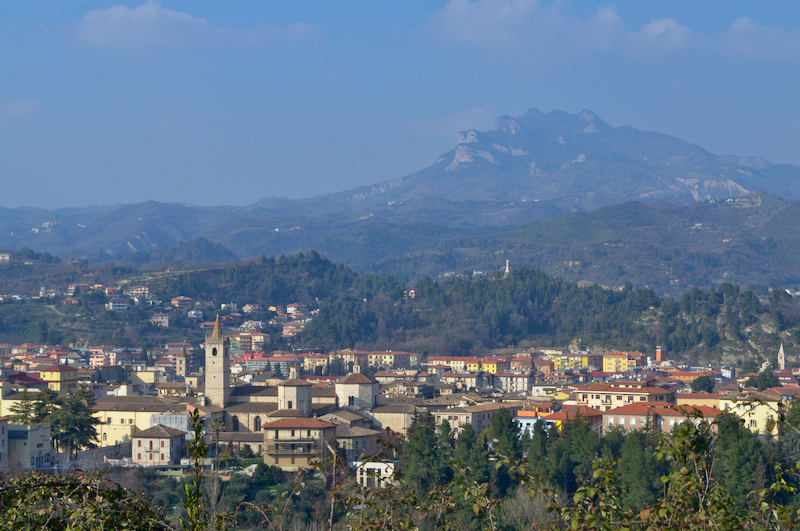
Prehistory and Roman times by Ascoli Piceno
The area around Ascoli was already populated in the Stone Age, mainly by Picenes. This people descended from the Sabines. If a Sabine tribe became too large, young people were sent away to settle elsewhere. They were often guided by an animal, for example a bull. Where the animal settled, they founded a new place.
The Picenes were once such a group who, according to legend, were guided by a sacred woodpecker. Hence the name Picener, from the Latin Picum, called Picchio in Italian. The place where they settled is today’s Ascoli Piceno.
Until the 3rd century B.C. The Piceni were allied with the Romans until they split in 91 BC. BC, only to be completely dominated by the Romans in the end. In 88 B.C. In the 4th century BC their place finally received the official Roman title Municipium (which was a city for the Romans).
In 49 B.C. In the 4th century BC the city was called Asculum Picenum. According to some theories, Asculum is derived from the name of the Greek general Aesis, who visited the Adriatic coast.
In Roman times, Ascoli Piceno was an important place because the Via Salaria ran here, the road from the Adriatic coast to Rome, on which salt, which was so important at the time, was transported and was used, among other things, to preserve food.
Isabelle and Erik visit Ascoli Piceno
Blogger colleague Isabelle paid an extended visit to Ascoli Piceno with her husband Erik in 2019. Here is her trip report with updated information on restaurants etc.:
We parked along Viale Treviri on the west side of the city near Porta Romana. Alternatively, you can easily park near the stadium or the train station, from where a free shuttle bus runs to the center on weekdays.
9 a.m.: Breakfast at Latteria Marini.
We entered Ascoli through the Porta Romana and followed Via Dino Angeli to Piazza Roma. Here we discovered the old dairy Latteria Marini, where we had delicious brioche (that’s what the croissant/cornetto/croissant is called in the Marche) with cappuccino for breakfast!

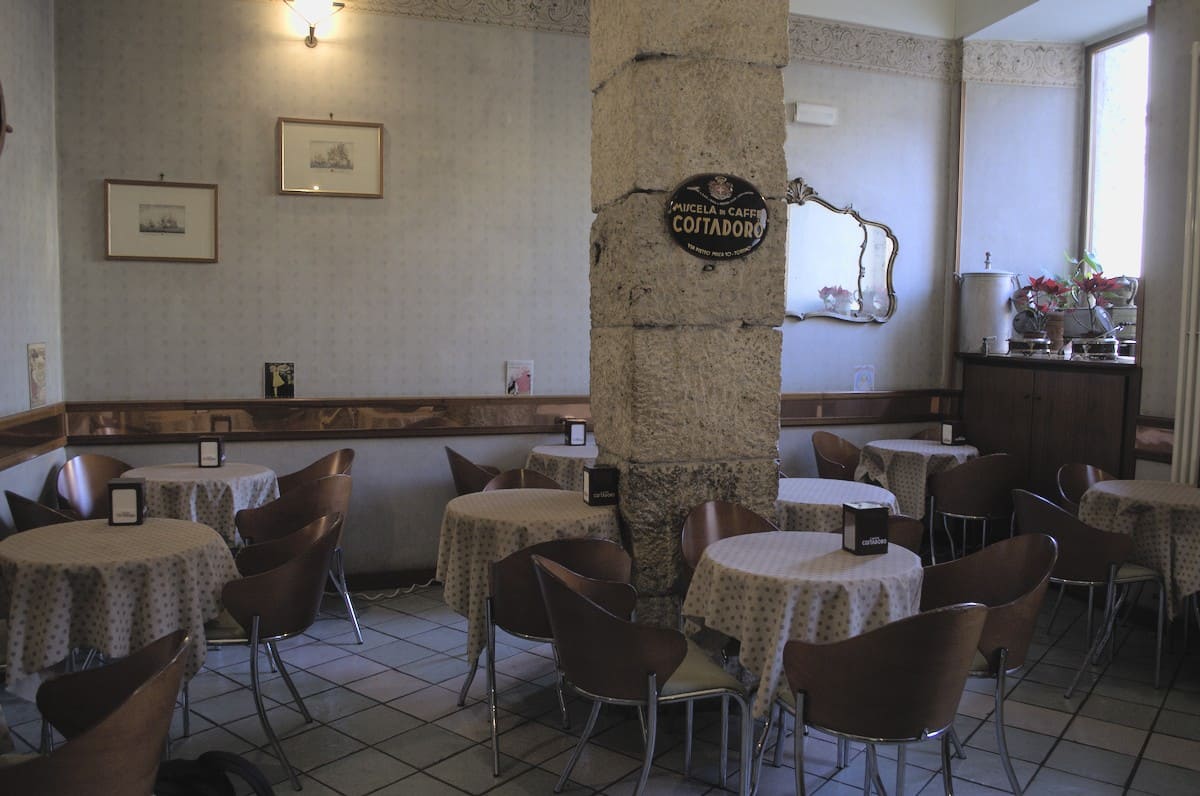
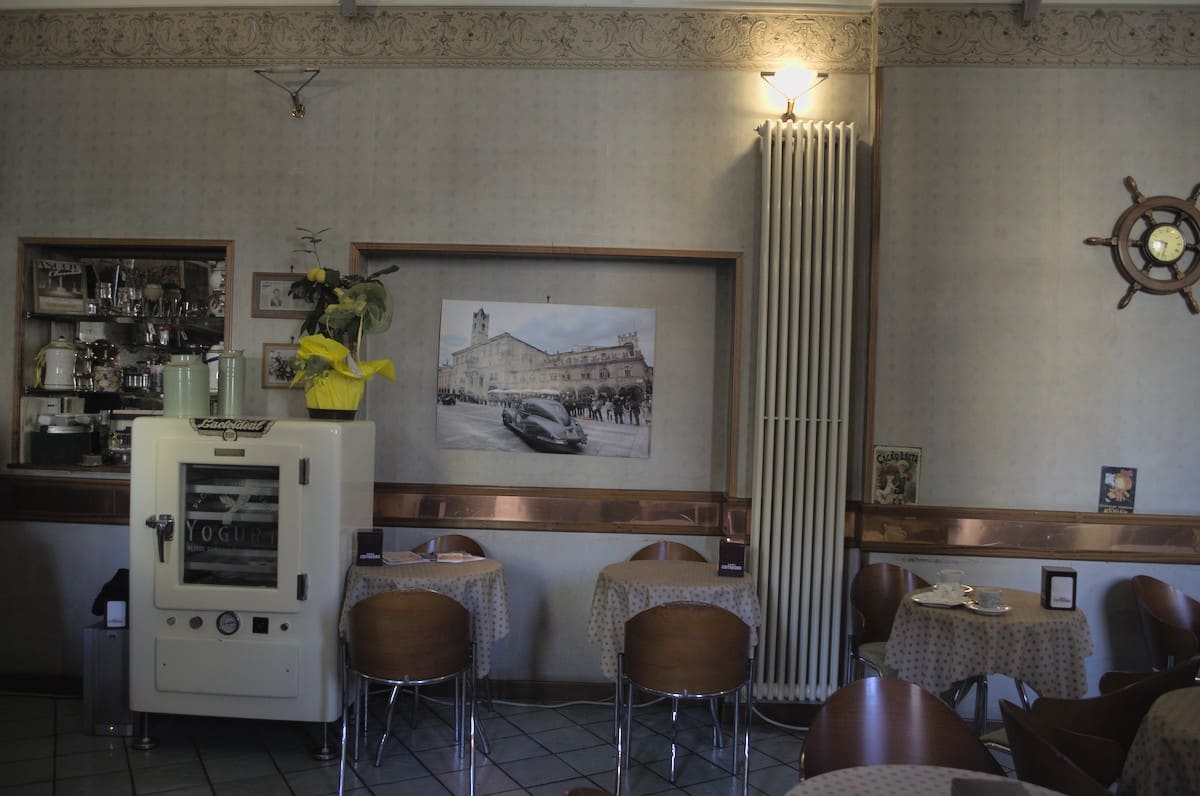
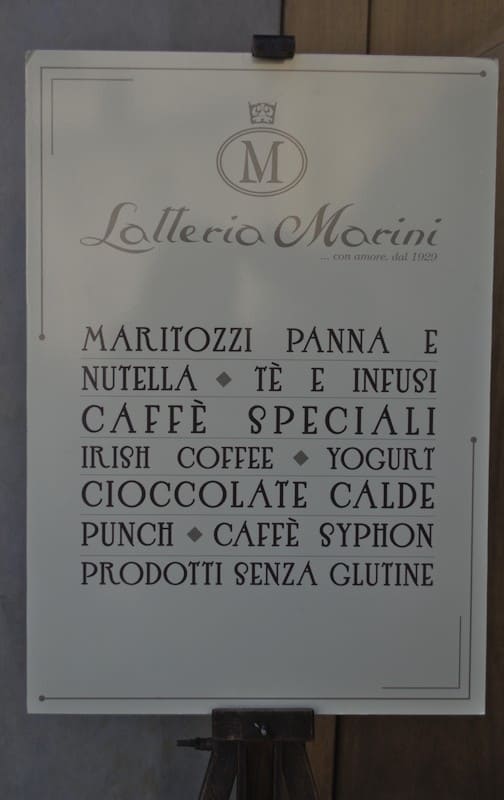
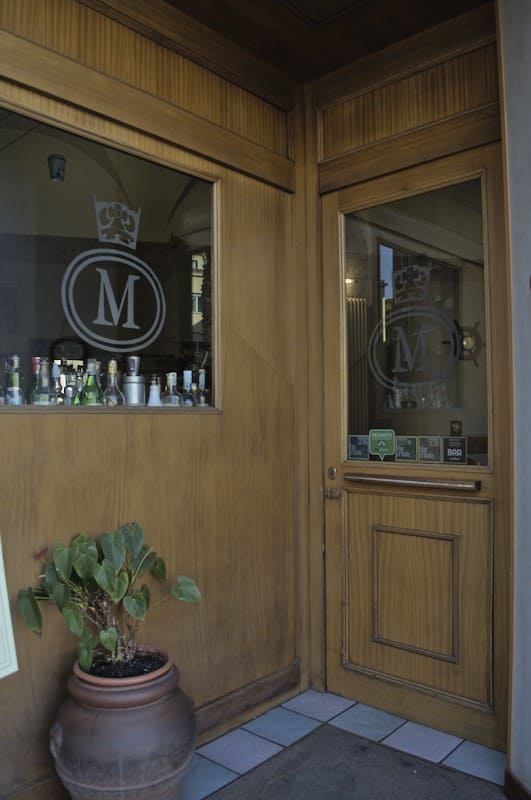
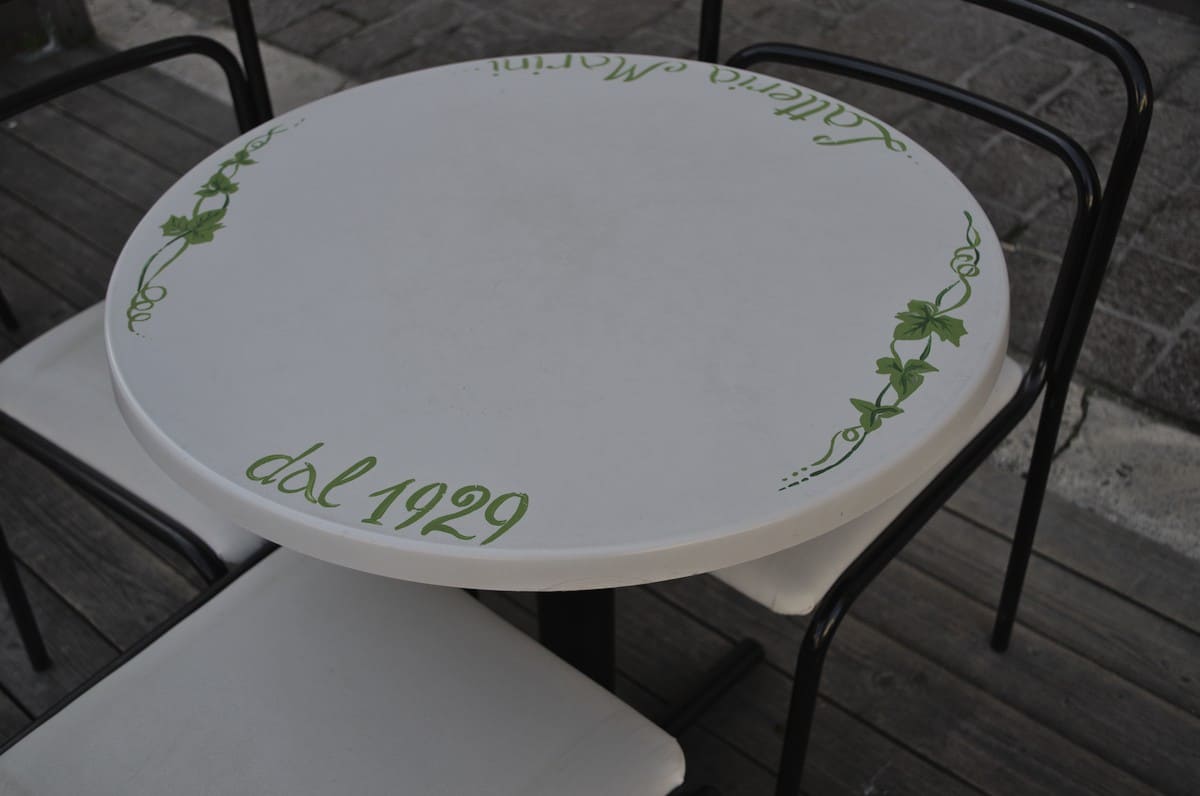
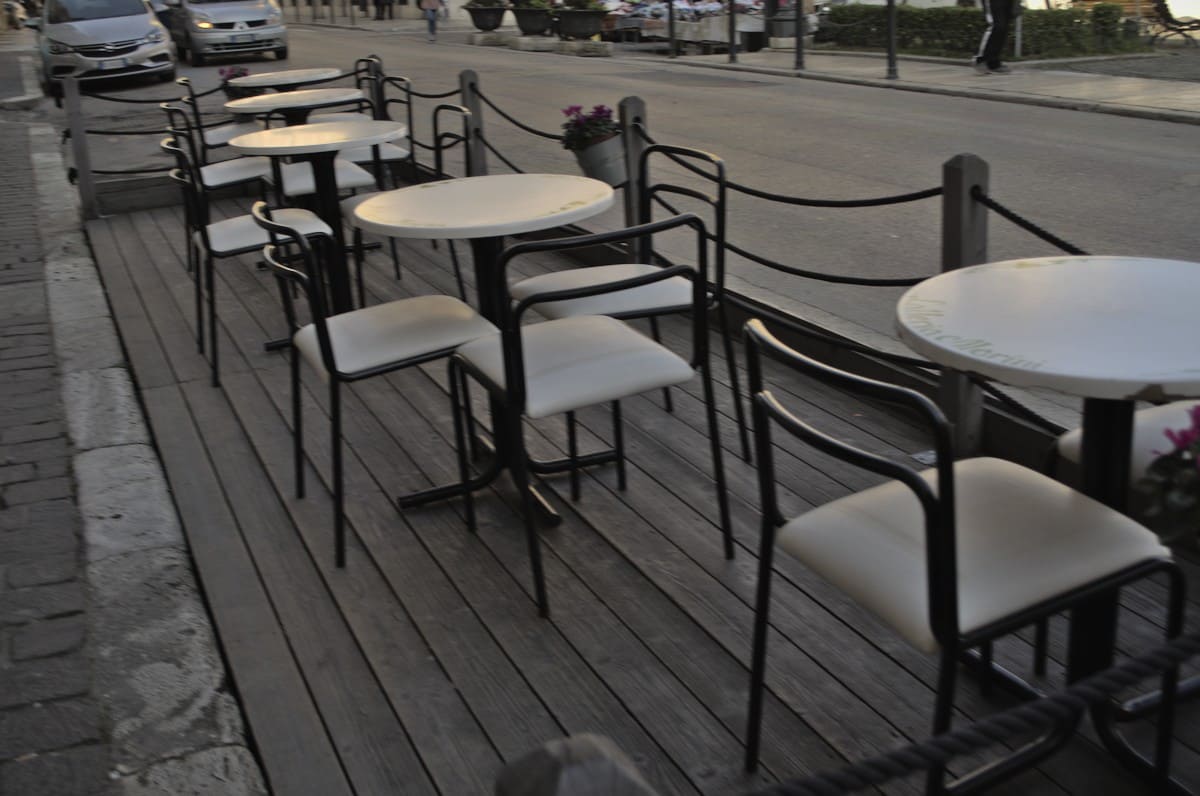
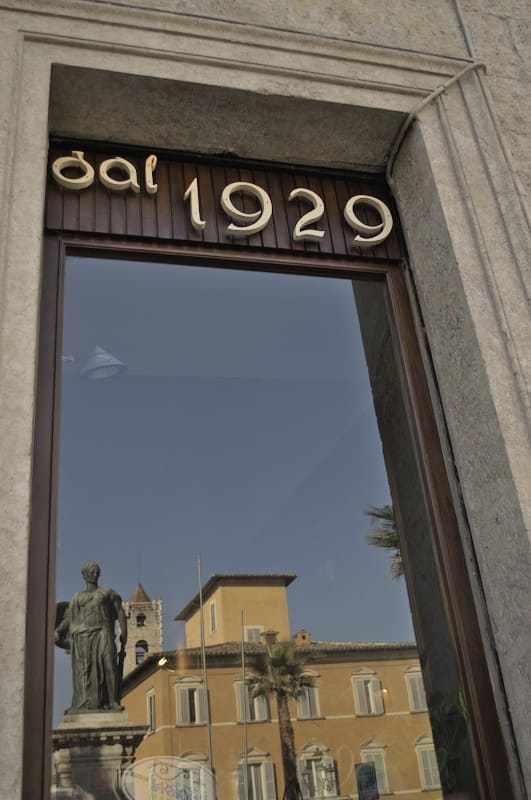
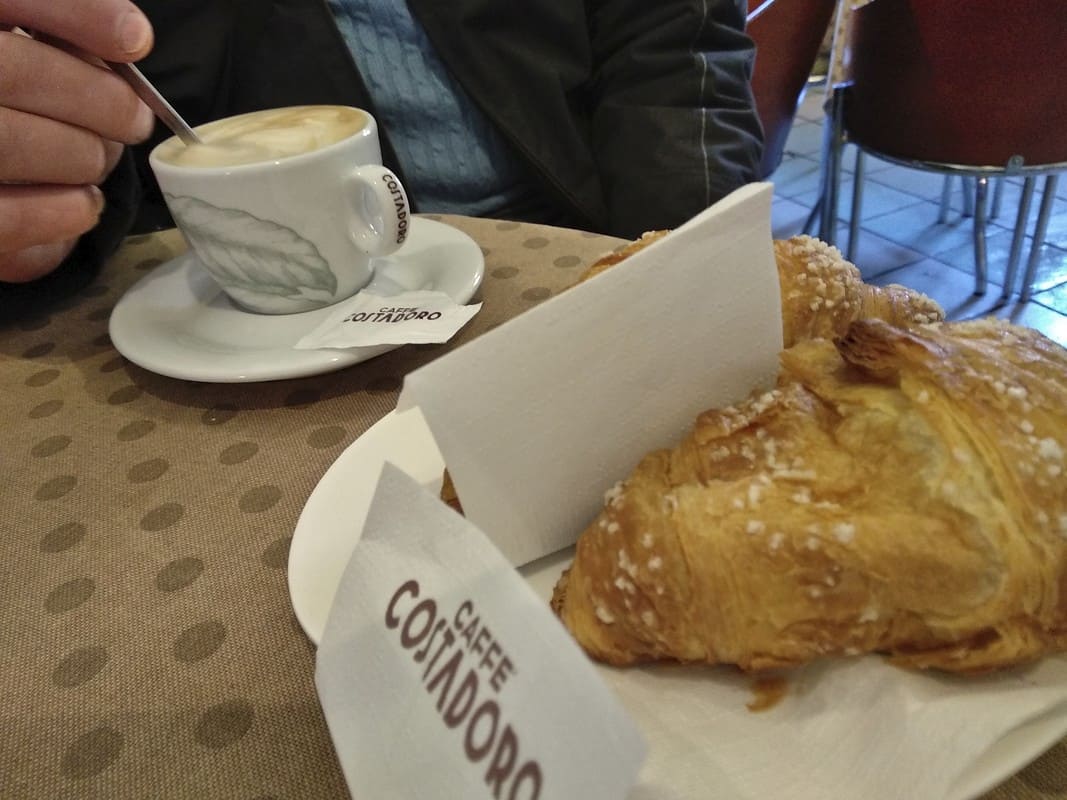
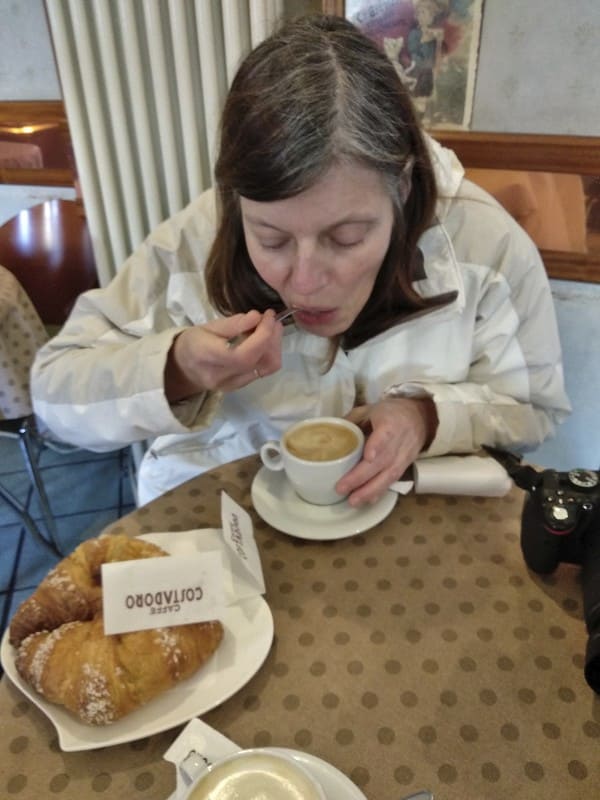
It was still February and therefore too cold to sit outside despite the bright sunshine. We decided to try the Maritozzi next time!
10 am: Piazza Arringo.
After the delicious breakfast we were in good spirits and went straight to one of the city’s two main squares: Piazza Arringo.
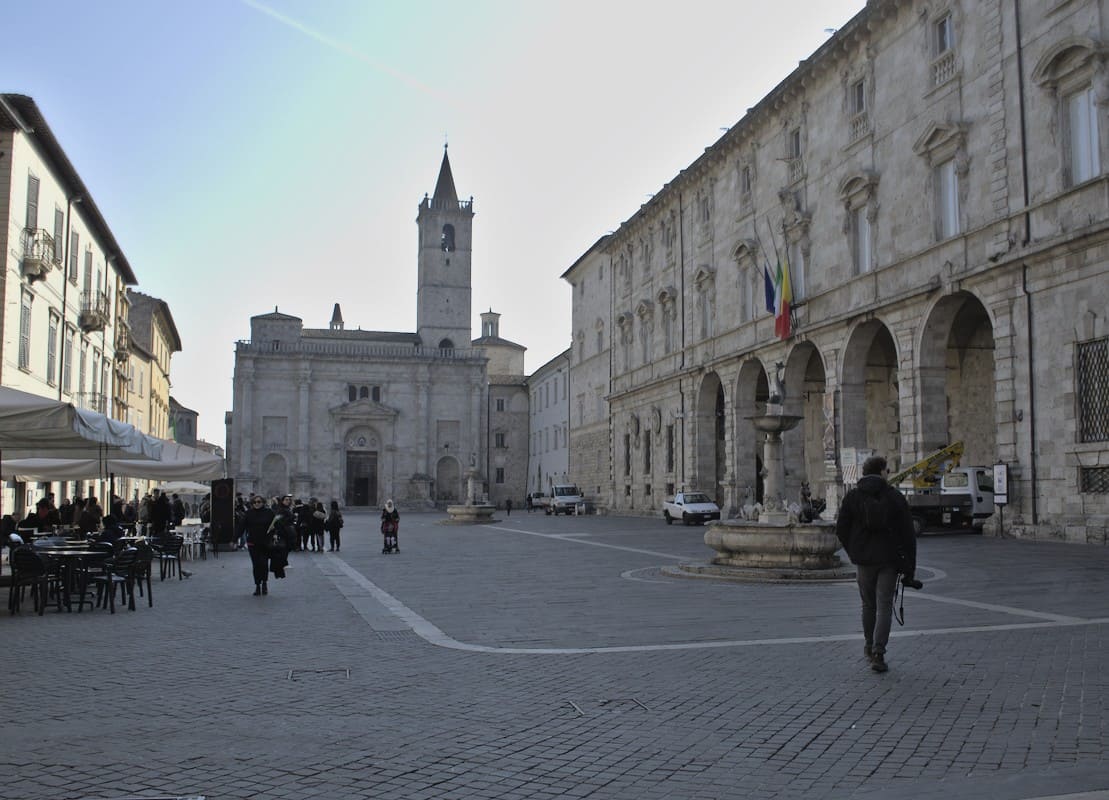
Since the 12th century, decision-makers called aringhi or arenghe or arrenghi have gathered here under a large elm tree. Hence the name of the place. Between the 13th and 19th centuries, more and more important buildings were gradually added: the Palazzo Panici with the archaeological museum, the bishop’s palace with the diocesan museum, the baptistery and the Cathedral of Sant’Emidio.

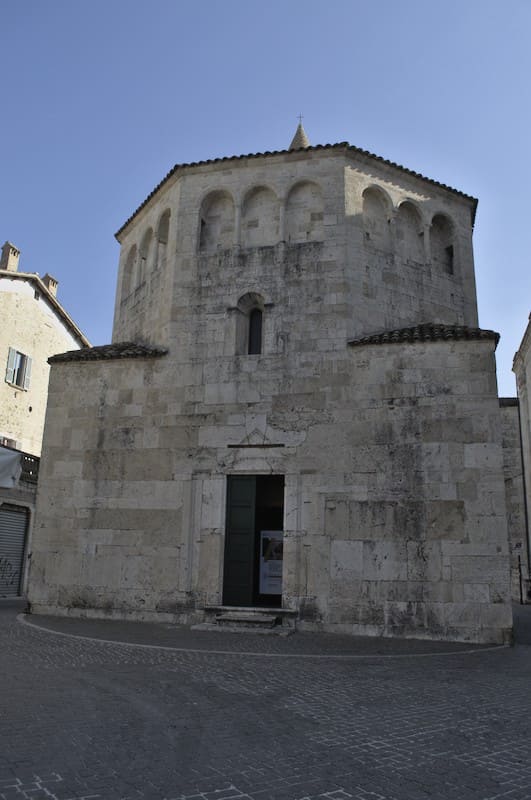
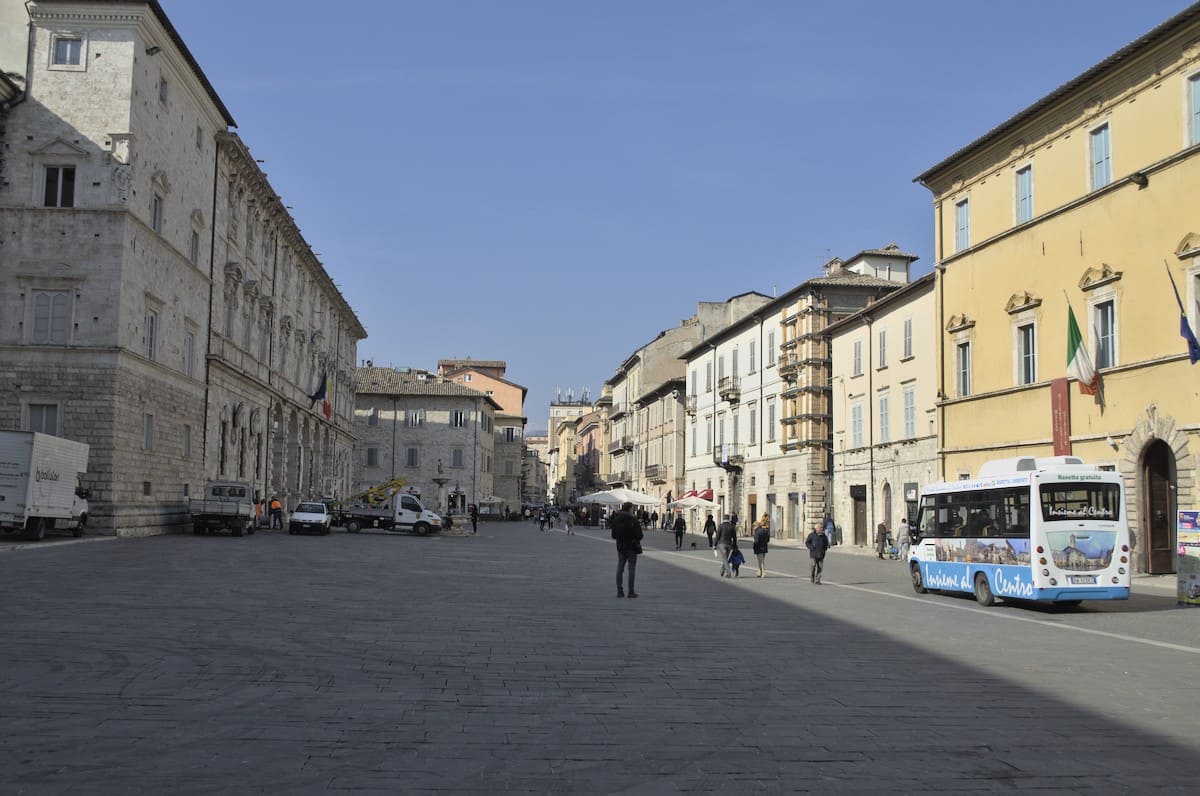
Because the weather was so wonderful, we decided to just visit the inside of the cathedral. The building dates to the 5th century AD and was built on the remains of a Roman temple and basilica. The Roman Forum probably previously stood on this spot. In the 11th century the crypt was added in honor of St. Emidius. From then on the church was no longer called St. Mary’s Church, but rather Sant’Emidius Church.
Incidentally, St. Emidius was probably born in Trier in the Eifel in the 3rd century, became a Christian and traveled to Italy. In Milan he was ordained a priest and bishop and was finally sent by Pope Marcellinus as the first bishop to Ascoli Piceno. In 304 AD he was martyred under Diocletian. Today he is considered the patron saint against earthquakes.
In the 16th century, the architect Cola dell’Amatrice redesigned the cathedral’s facade. The Chapel of the Blessed Sacrament was finally consecrated in 1838.
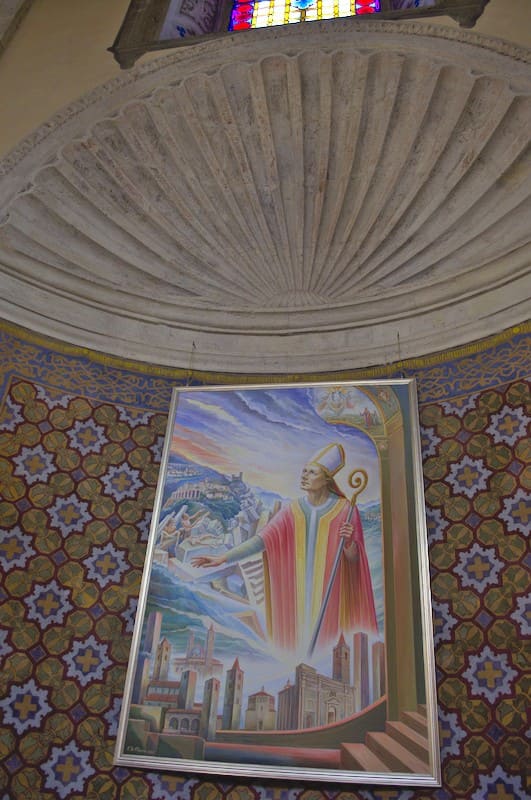
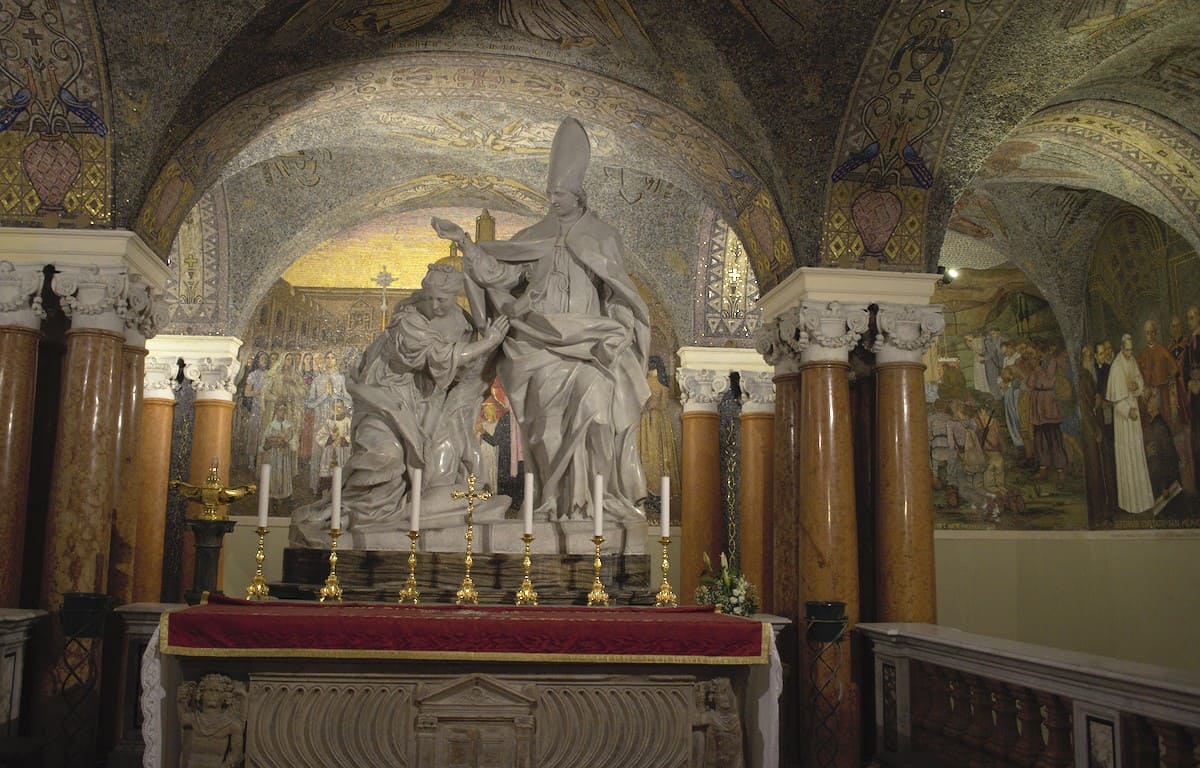
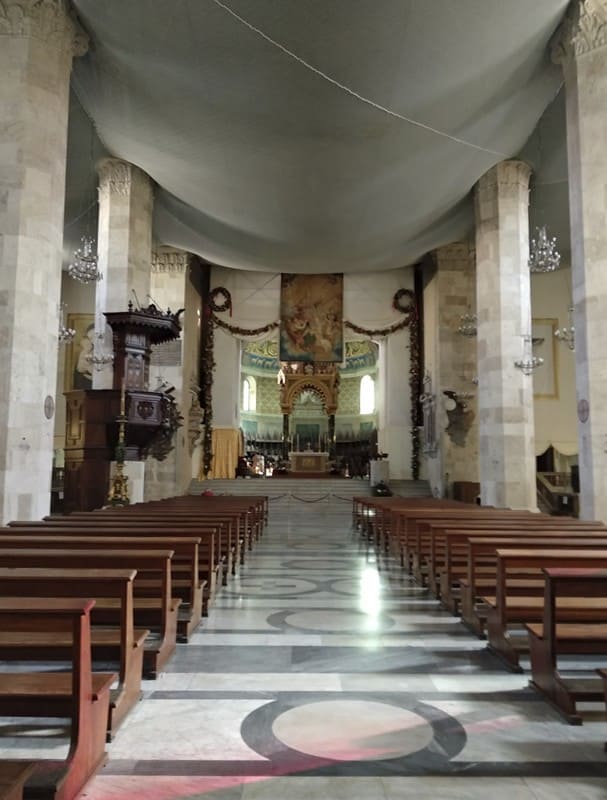
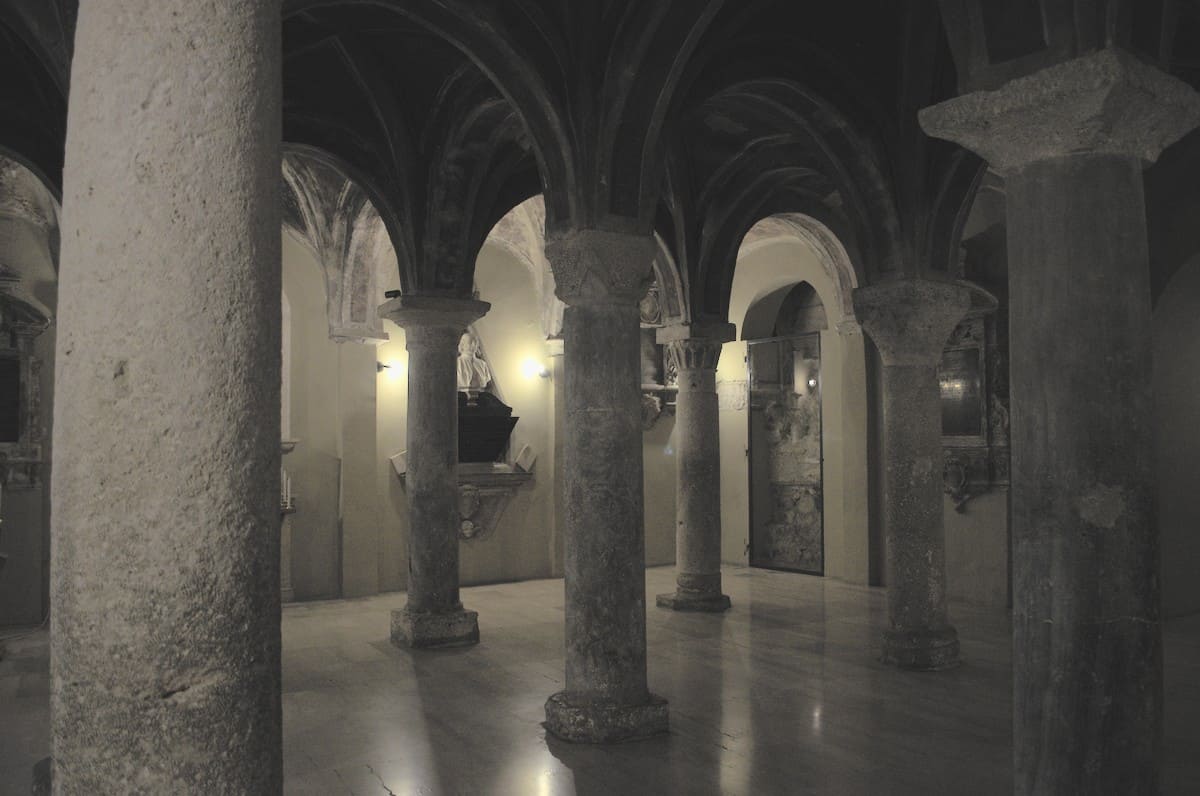
After World War II, the crypt was decorated with mosaics based on drawings by Pietro Gaudenzi.
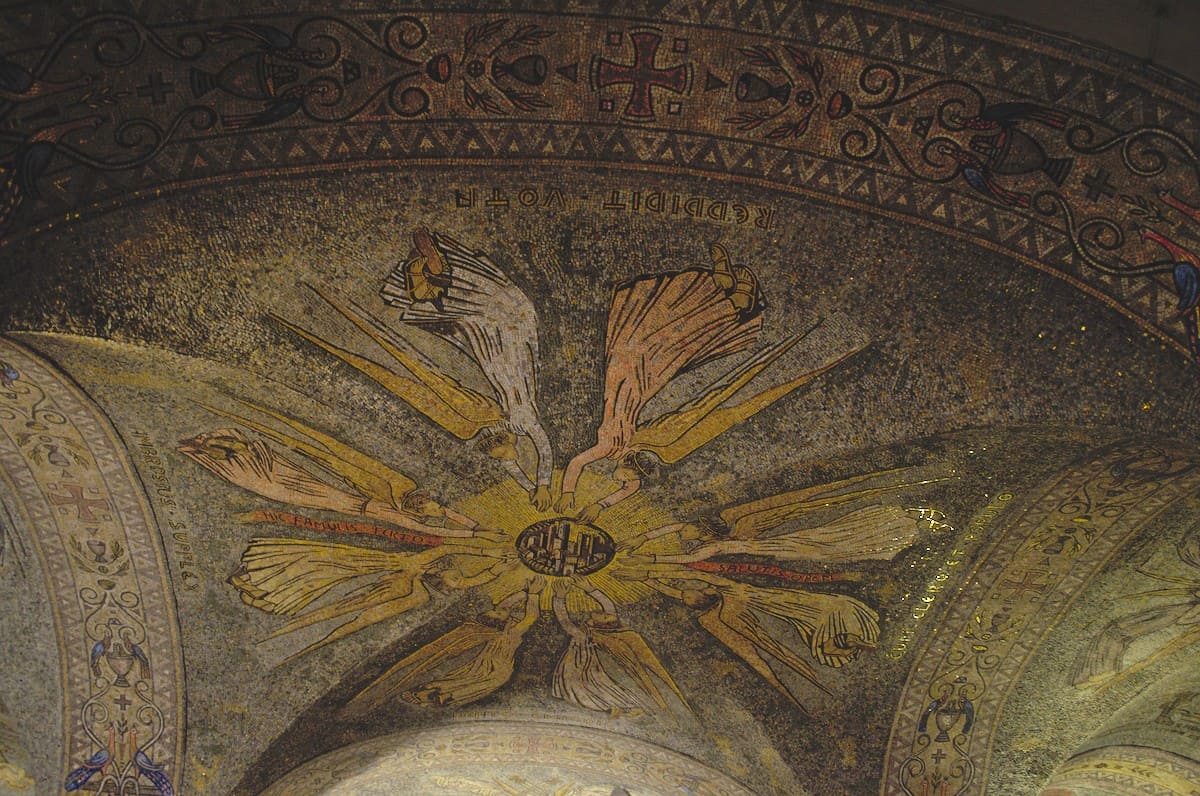
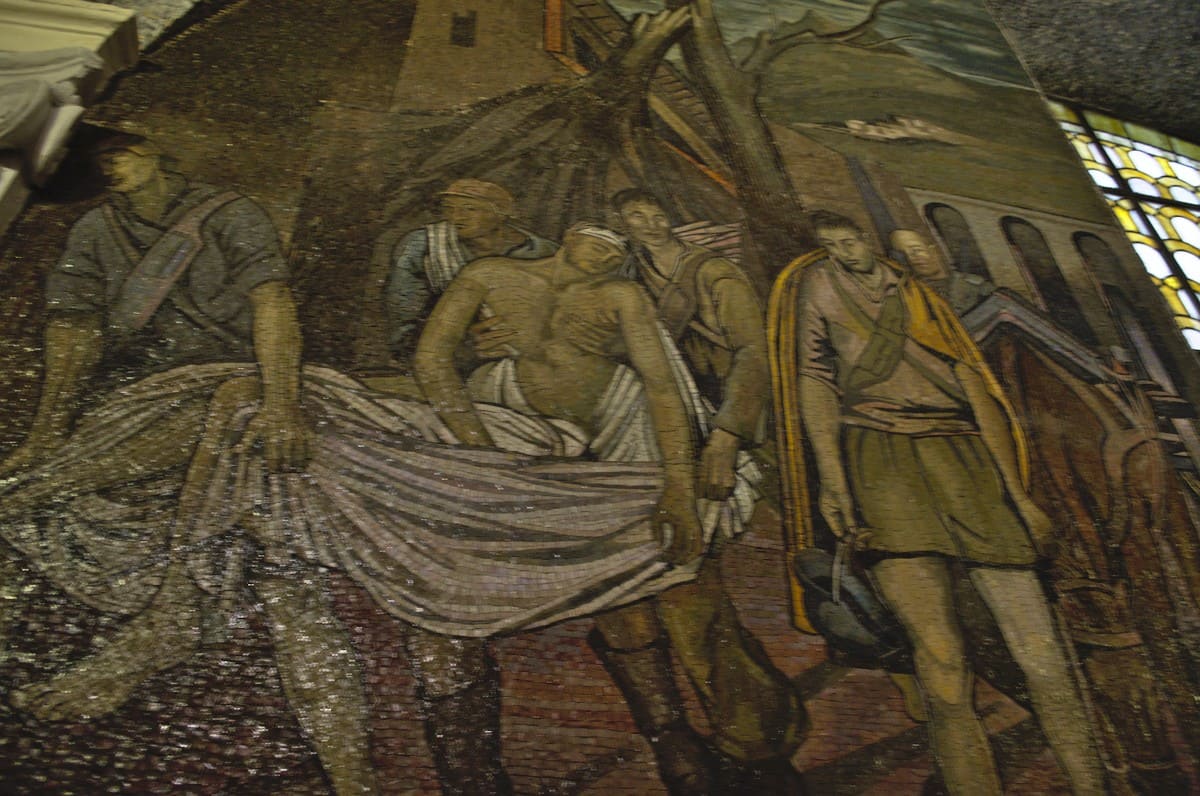
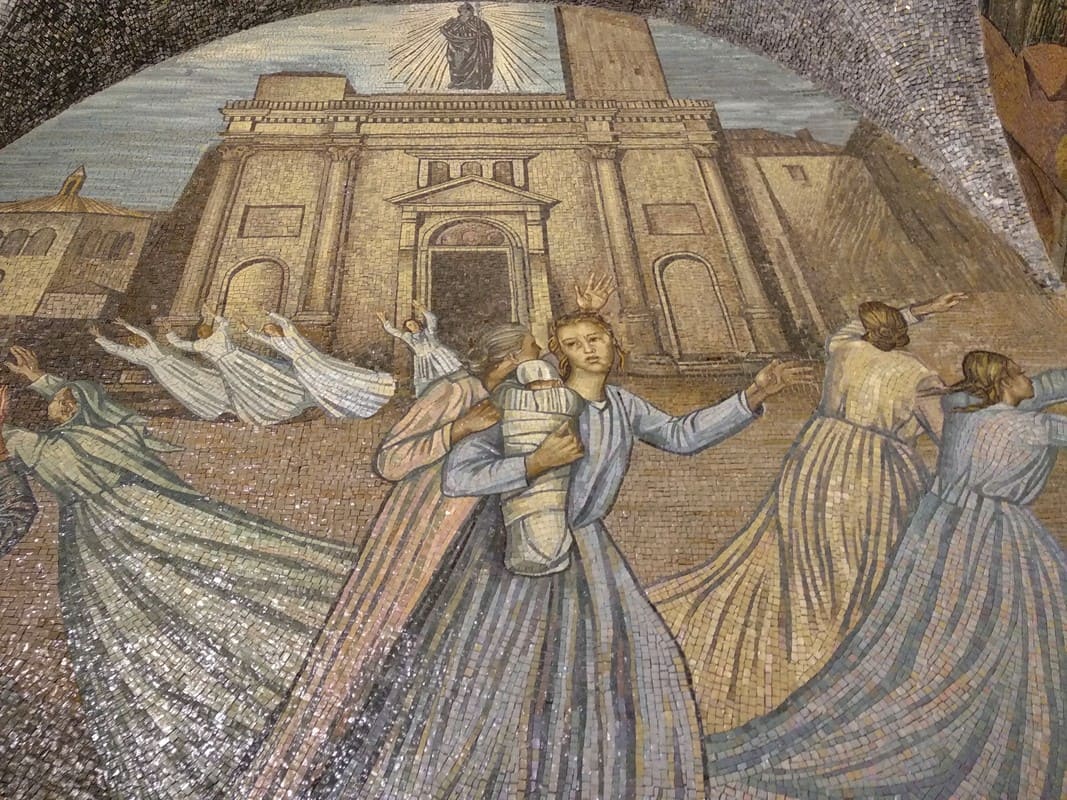
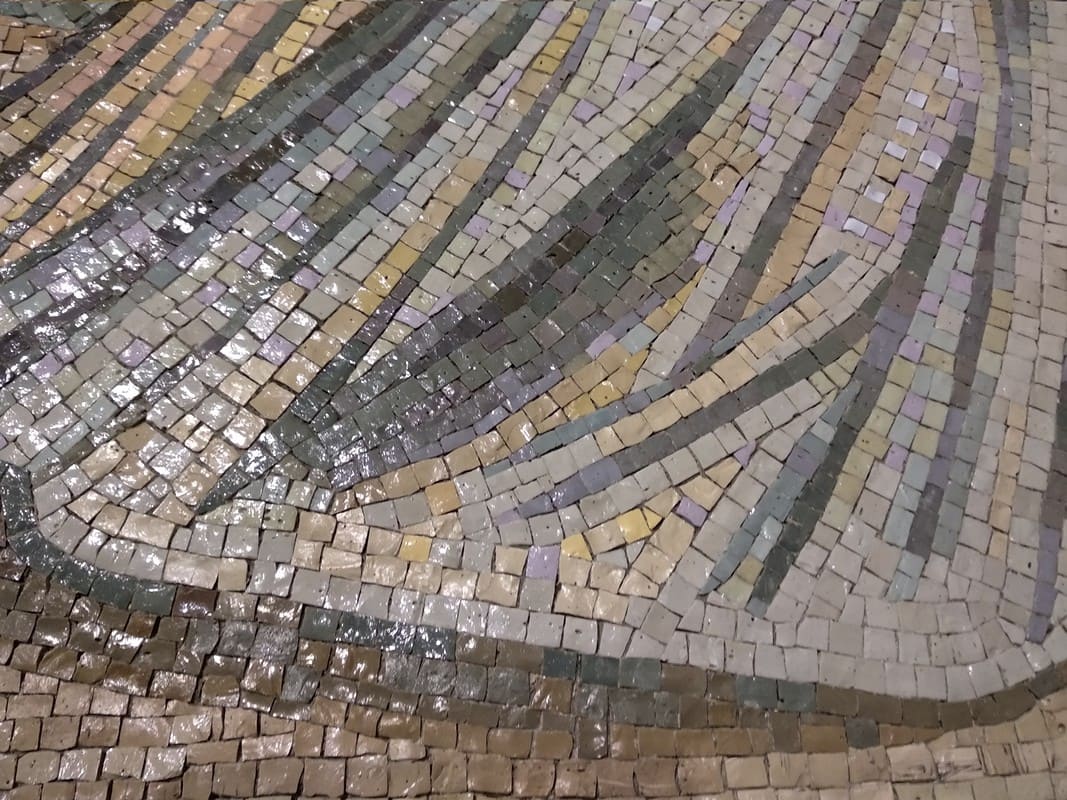
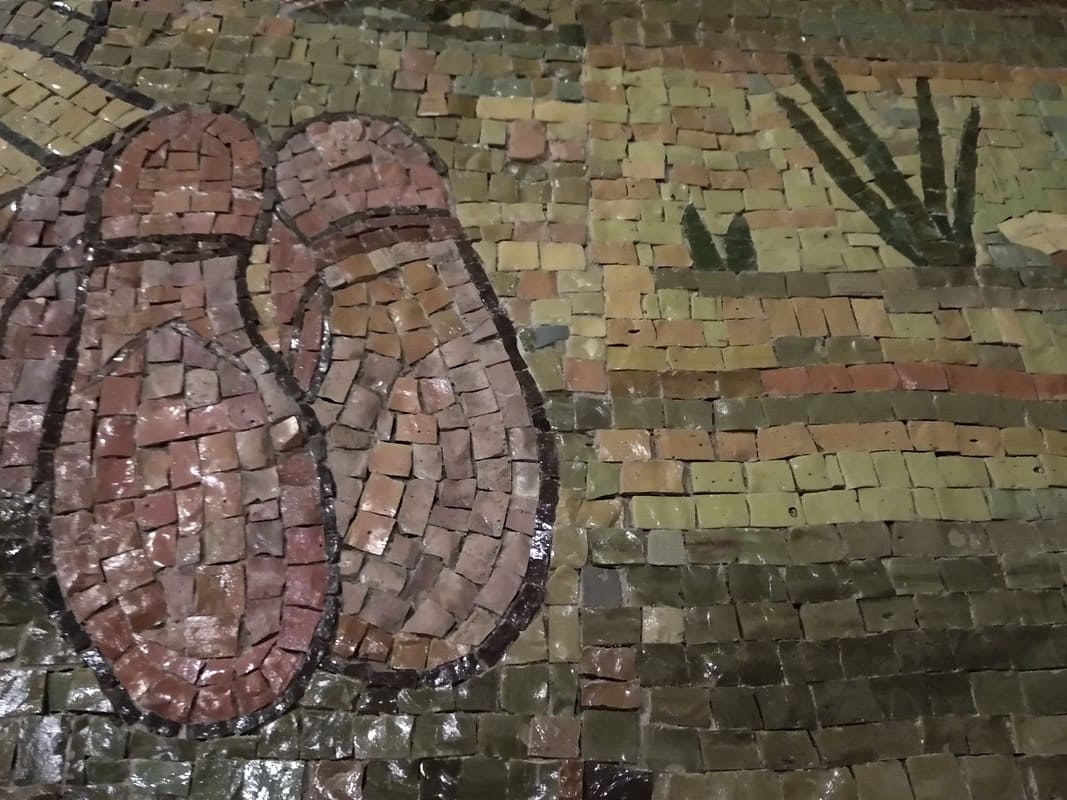
In a side chapel of the cathedral we finally discovered a silver reliquary of the arm of St. Emidius.
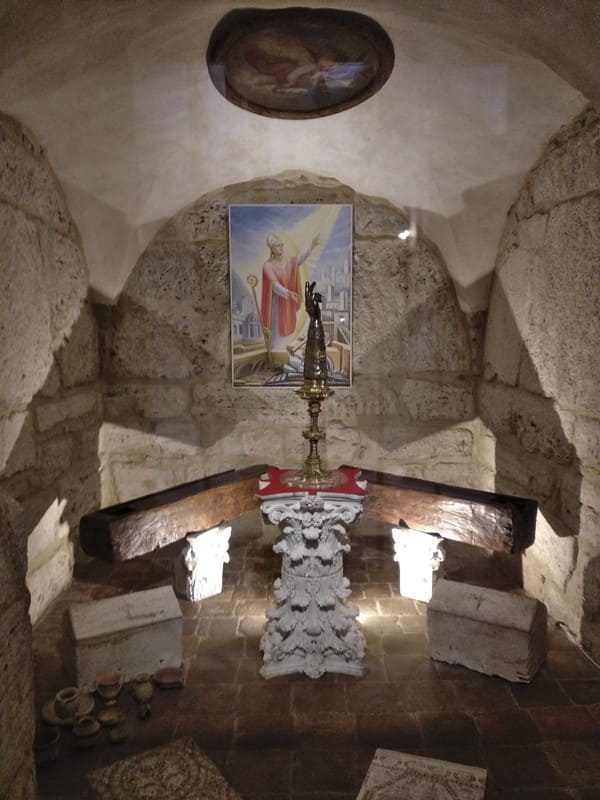
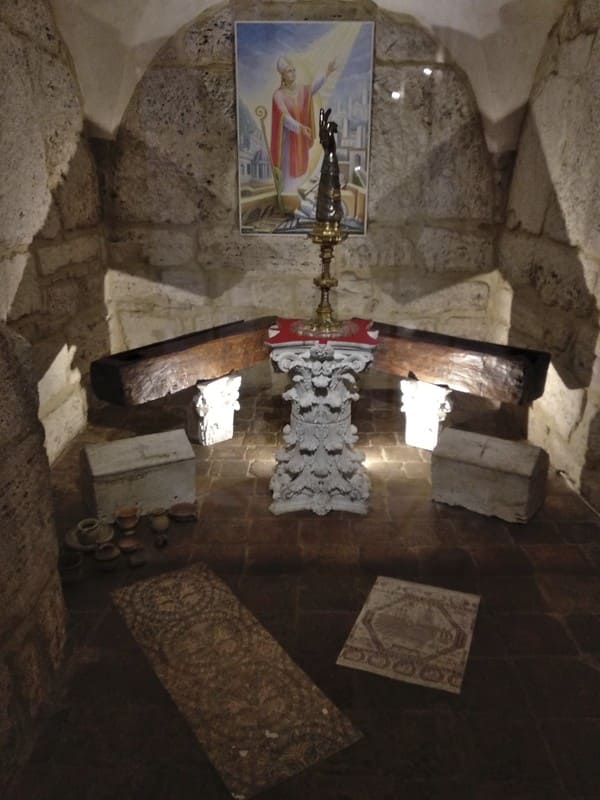
The dome and ceiling of Sant’Emidius are beautifully painted with frescoes by the 19th century artist Mariani, but unfortunately there was no lighting on the day we visited. They were also partially covered by cloths intended to protect visitors from falling stones after the 2016 earthquake (which has since been safely remedied).
Also in the Sacrament Chapel: the polyptych by the Venetian artist Carlo Crivelli from 1472. It depicts Mary with the baby Jesus, flanked on the sides by apostles and saints.
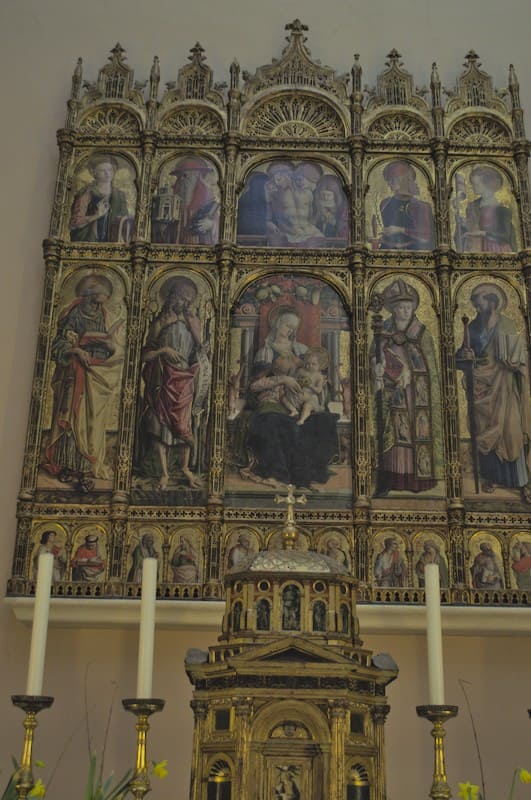
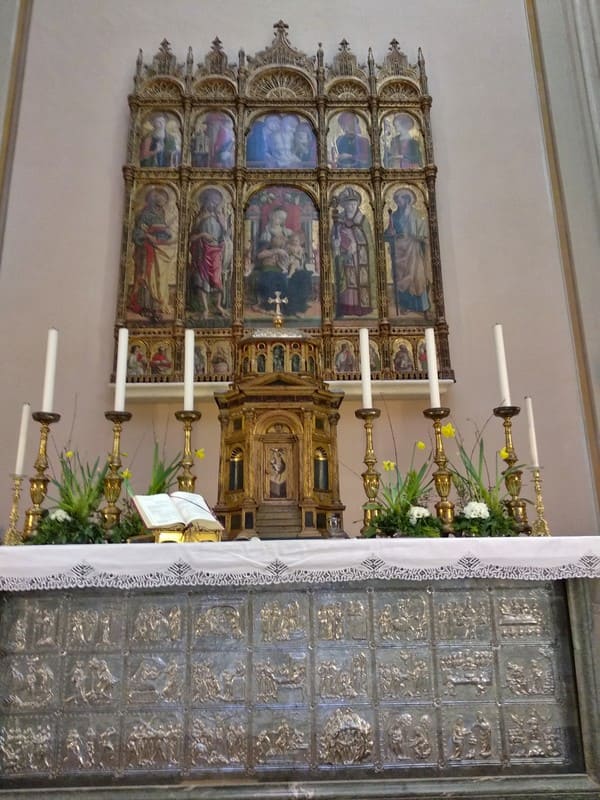
Below there is a silver altar from the 14th to 15th centuries, which consists of 24 squares with depictions from the New Testament.
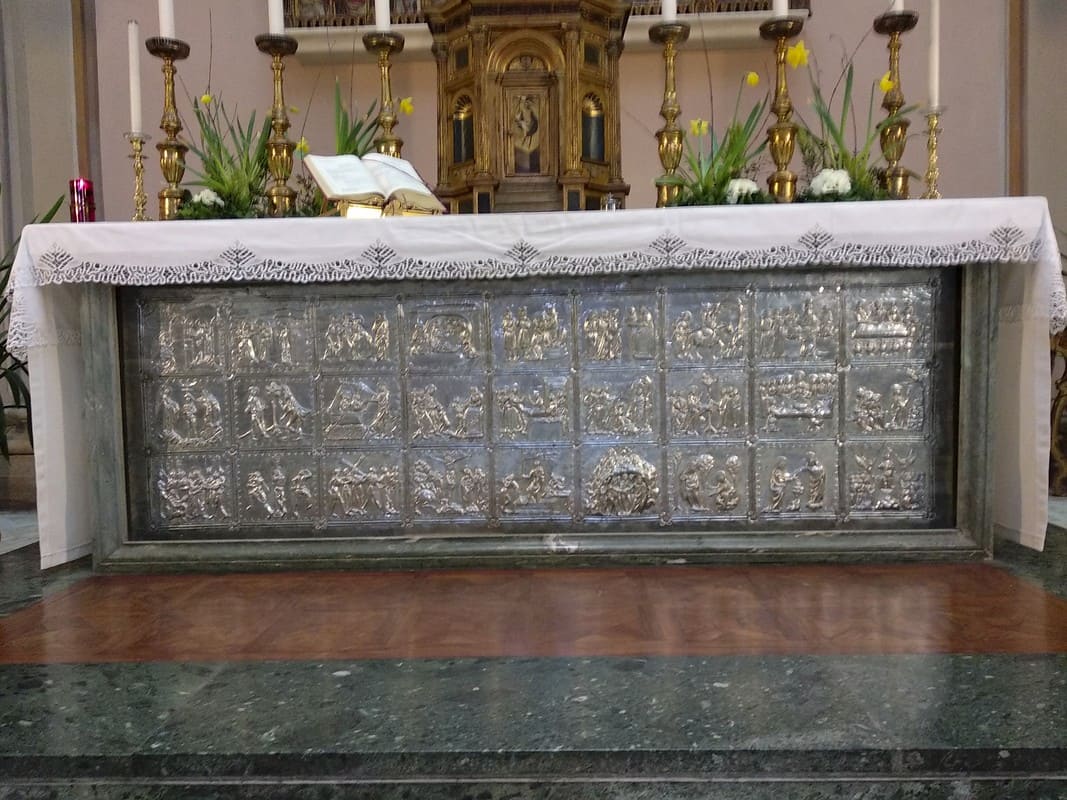
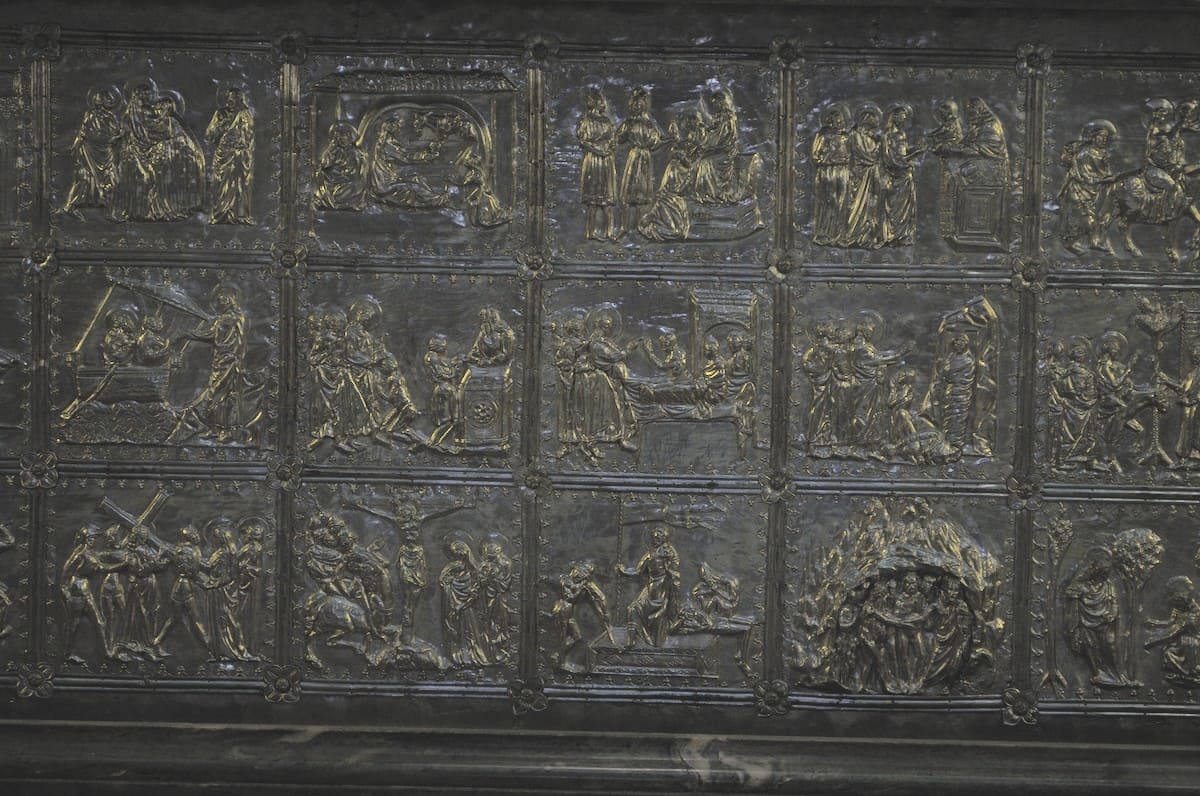
11.30 a.m.: Break in the famous Caffè Meletti.
We went to perhaps one of the most beautiful squares in all of Italy: the Piazza del Popolo!
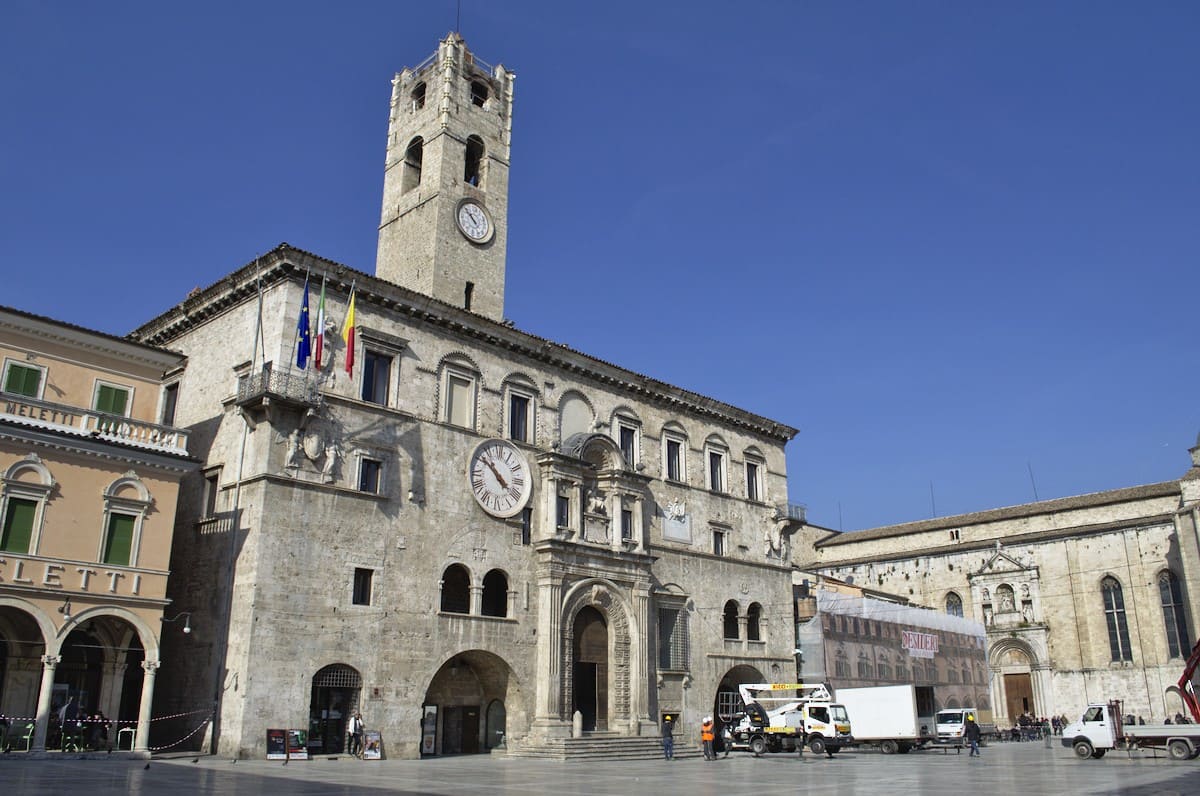

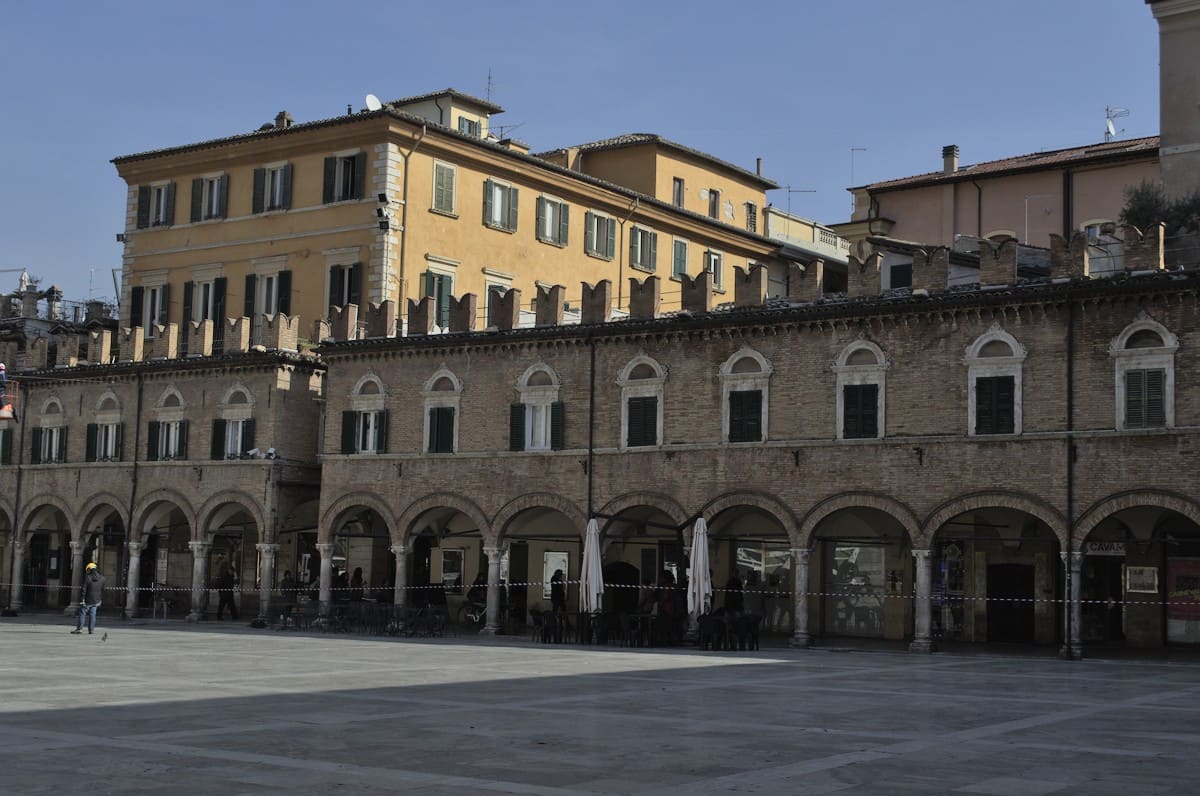
In Roman times, this was probably an important market and trading place. From the 15th century at the latest, it acquired its current rectangular shape, and the medieval square with its old houses disappeared. As a result, there was enough space for the Renaissance buildings from the 16th century: the portici or arcades and, above all, the Palazzo dei Capitani del Popolo.
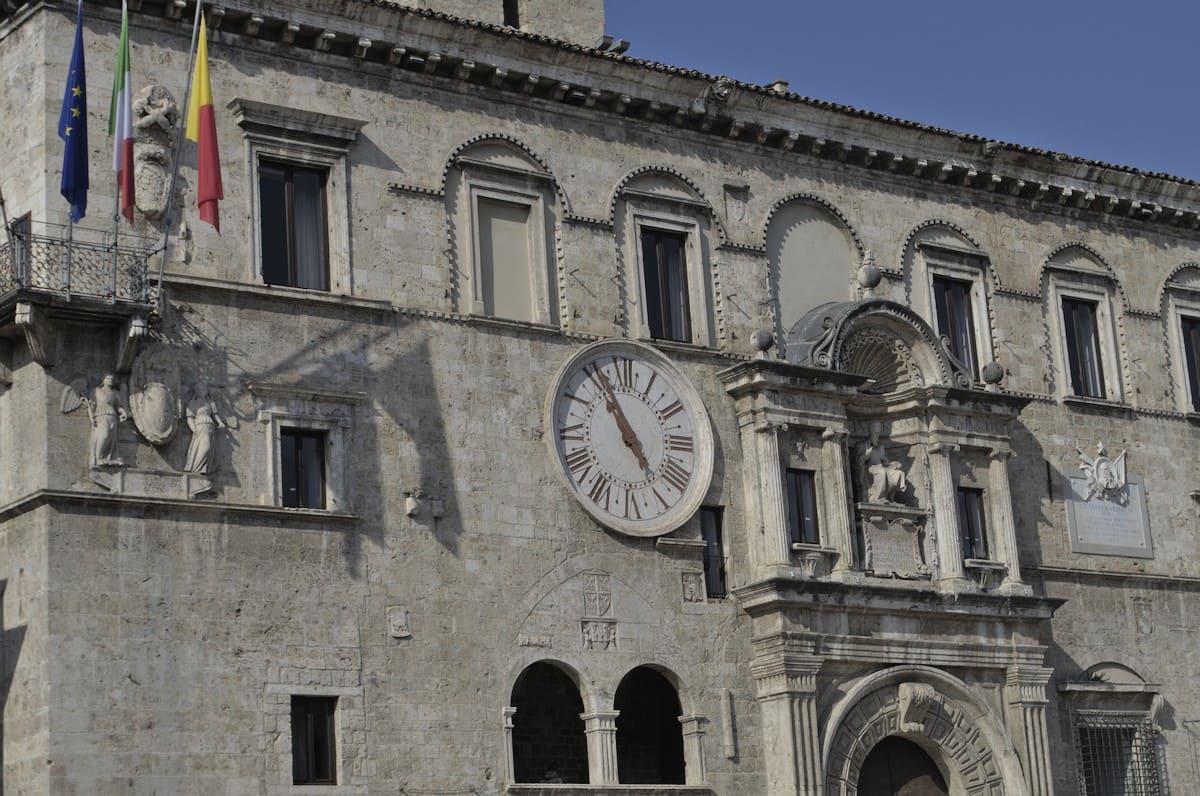
The Palazzo dei Capitani dates back to the 13th and 14th centuries, but the current view is from the 16th century. In 1855 it became state property and today houses the Cultural Council and City Council meetings. The statue depicts Pope Paul III, a 16th-century pope.
We stopped at Italy’s famous Caffè Meletti and only ordered 2 caffès because of the cold. You can also have an aperitif with small snacks there. In any case, it’s worth a visit: The café, which housed a post office in the 19th century, was opened in 1907 as an Art Nouveau café.

Silvio Meletti, a liqueur maker most famous for his aniseed liqueur, bought the building at auction in 1903. His heirs ran it until 1990 and then it stood empty for a long time until the Ascoli savings bank acquired it. After restoration work, it was handed over to the municipality and reopened in 1998. In 2010 it was renovated again.
If the walls could talk, they would surely chat about Hemingway, Sartre, de Beauvoir and other famous visitors.
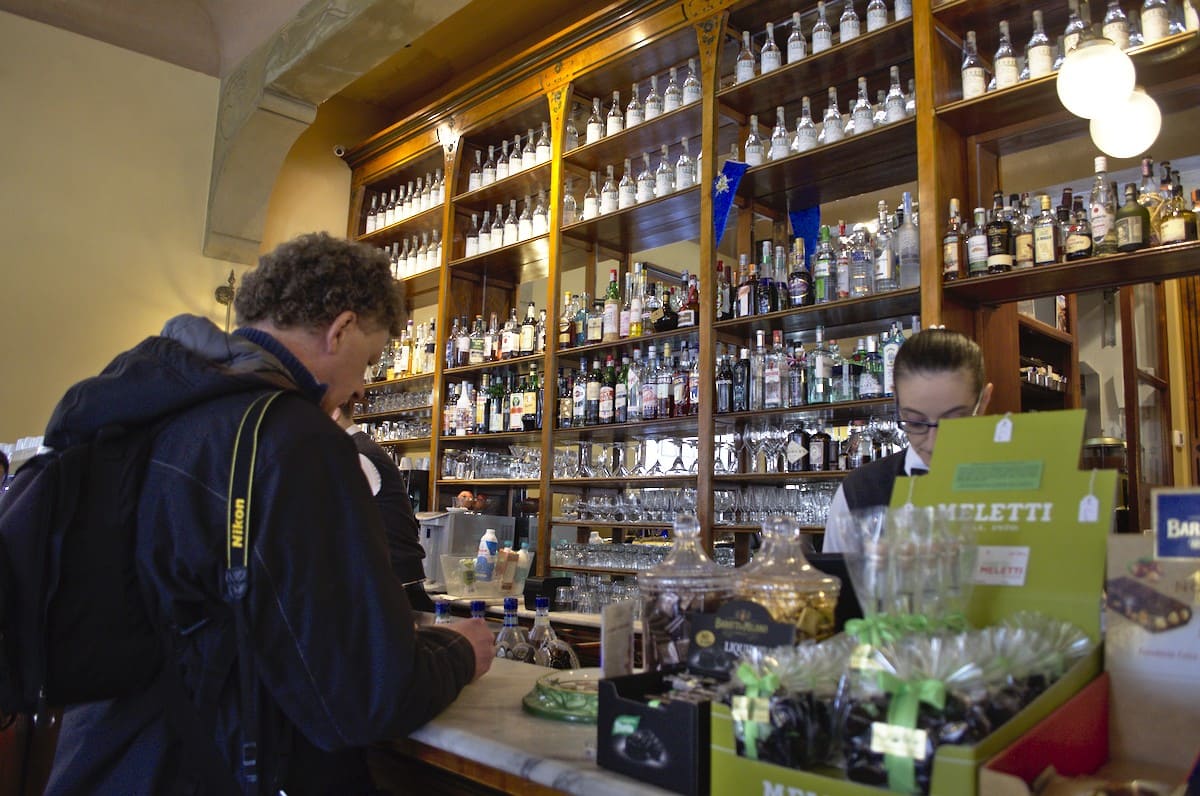
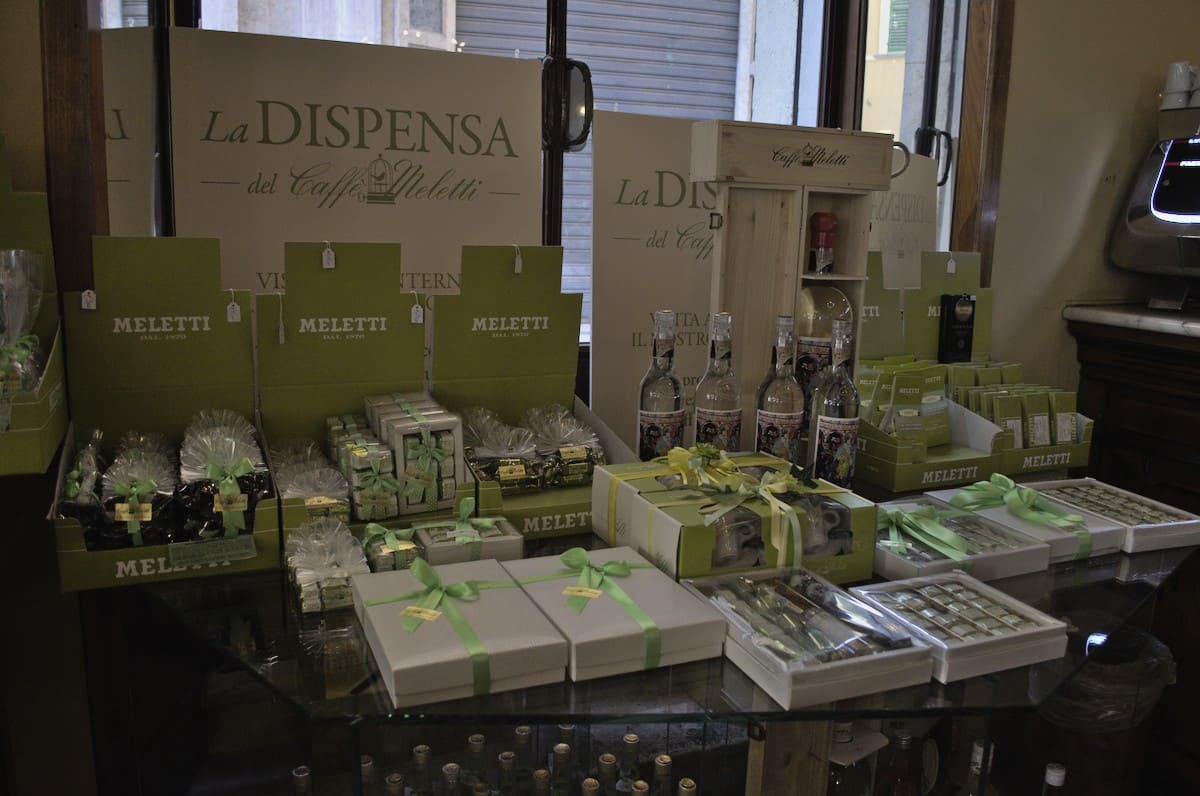
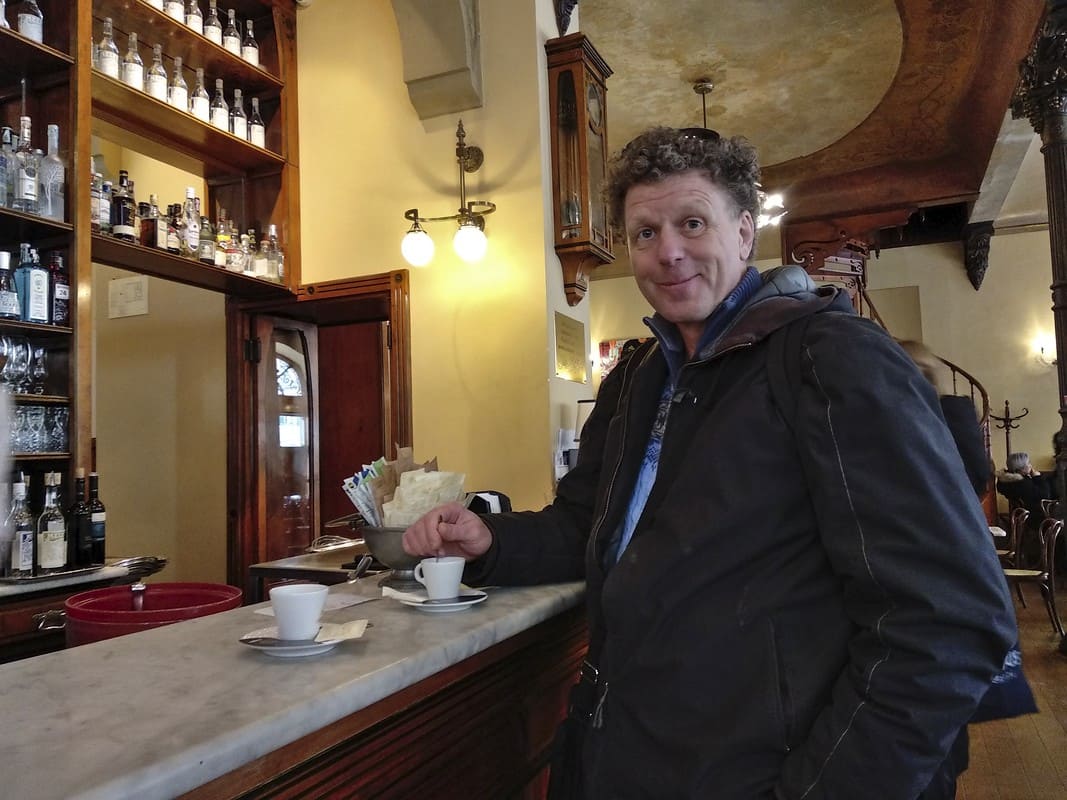
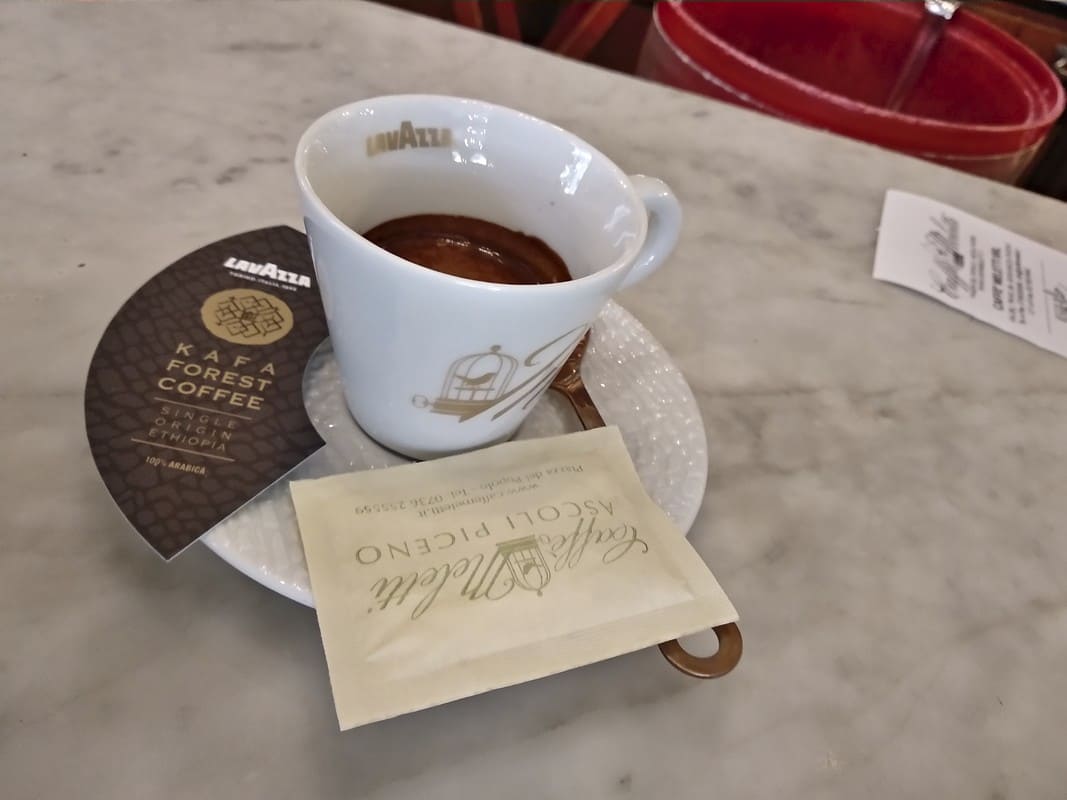
When we visited the toilet we could even see remains of the Roman buildings!
12.30 am: Pranzo / Lunch.
We walked along the main street Corso Trento e Trieste and then turned onto Corso Mazzini. On the first street on the left, Via dei Sabini, was the pizzeria/trattoria Anema e Core (Soul and Heart), which looked nice. And we were not disappointed!
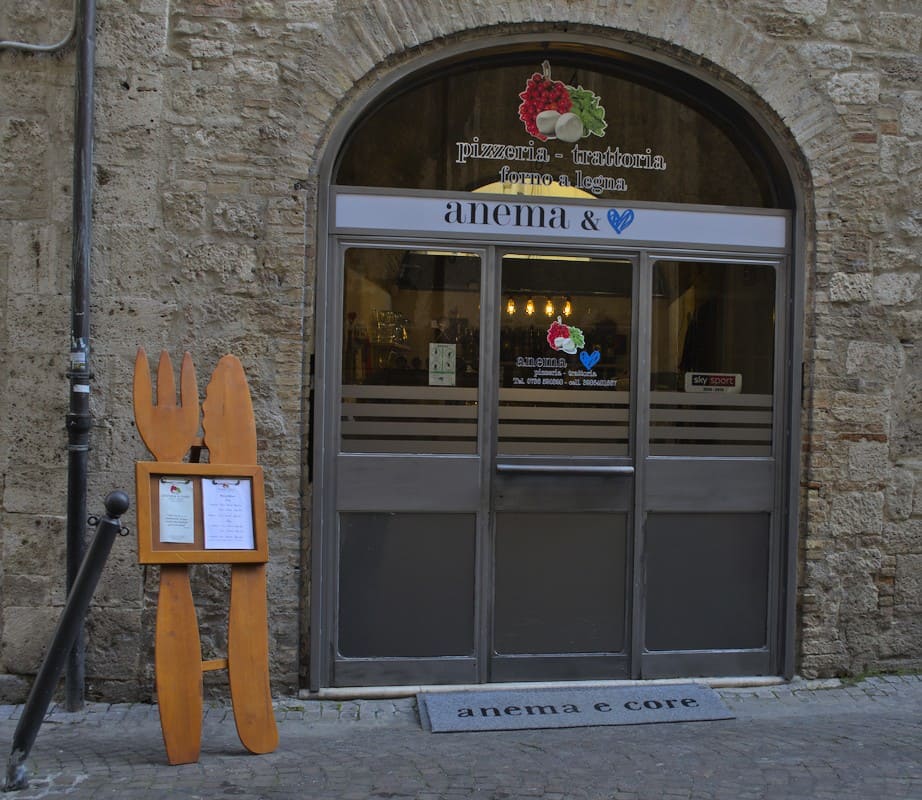

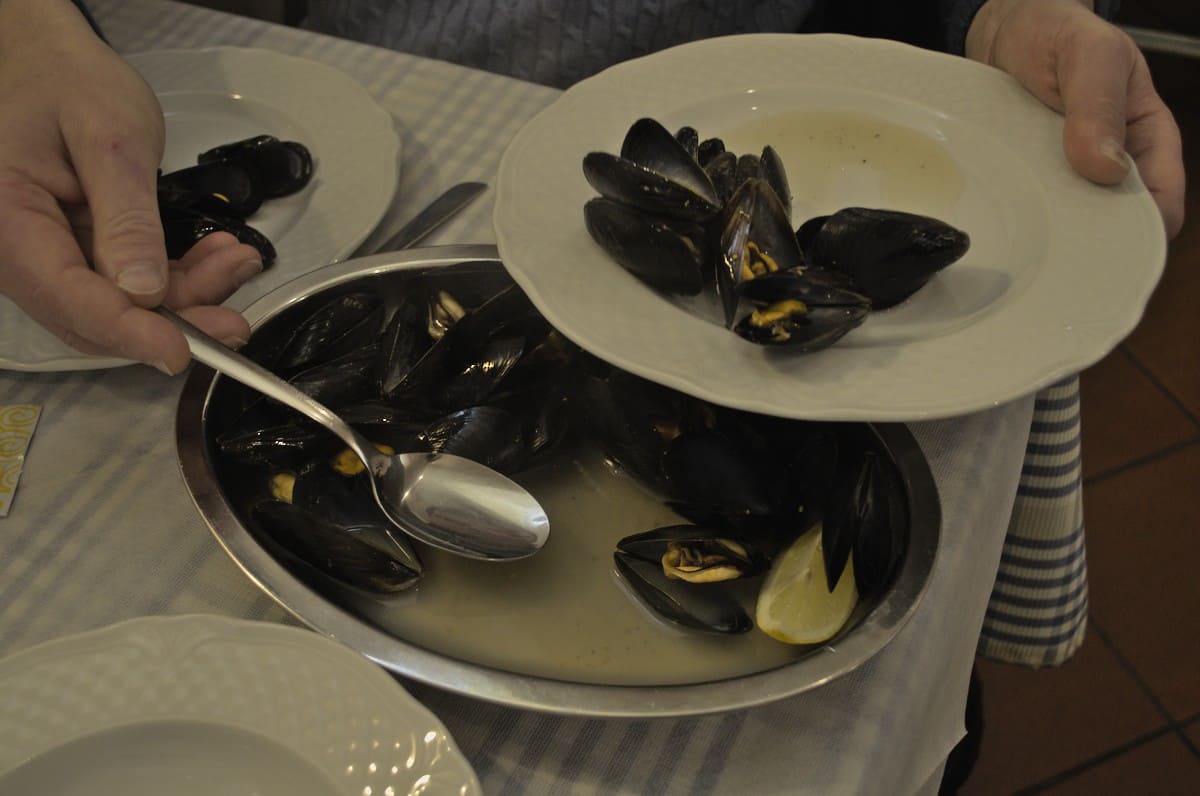
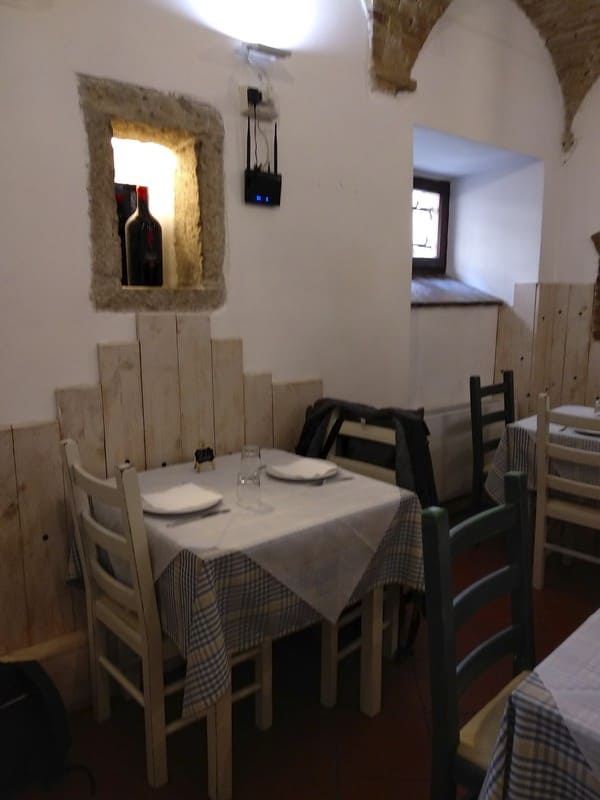
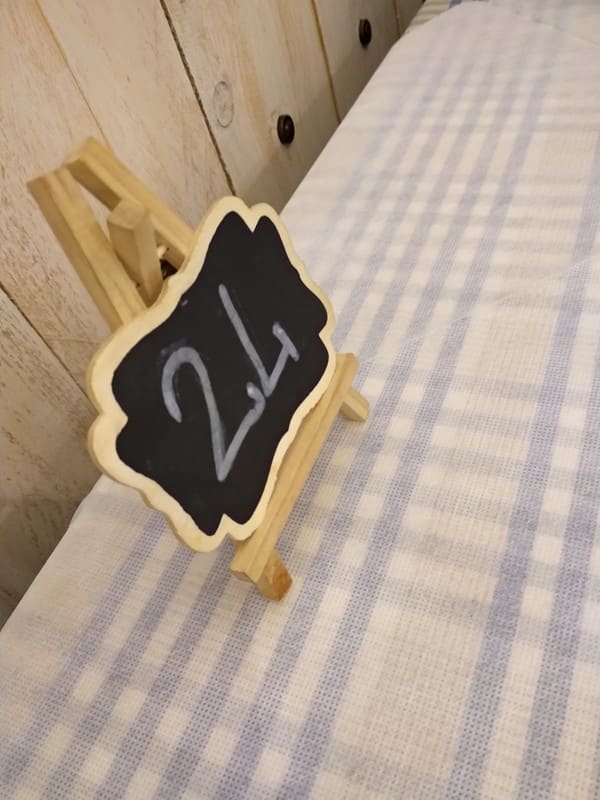
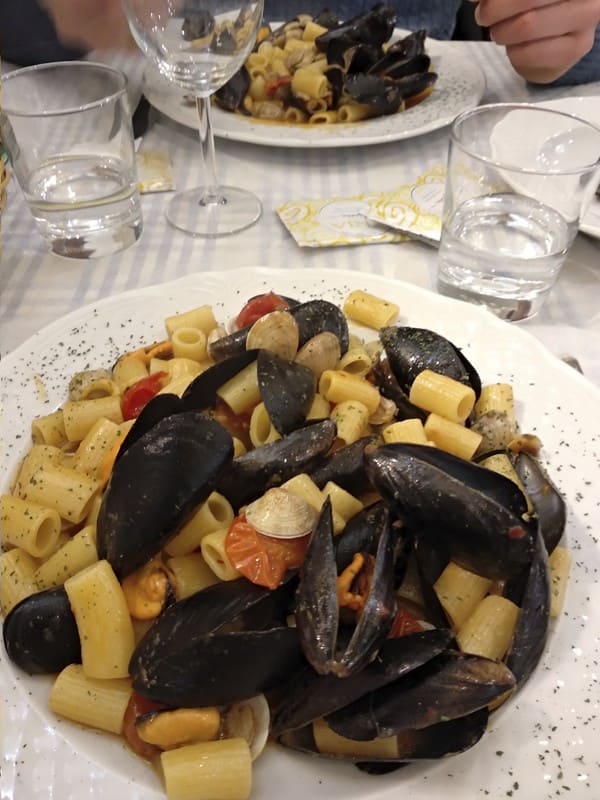
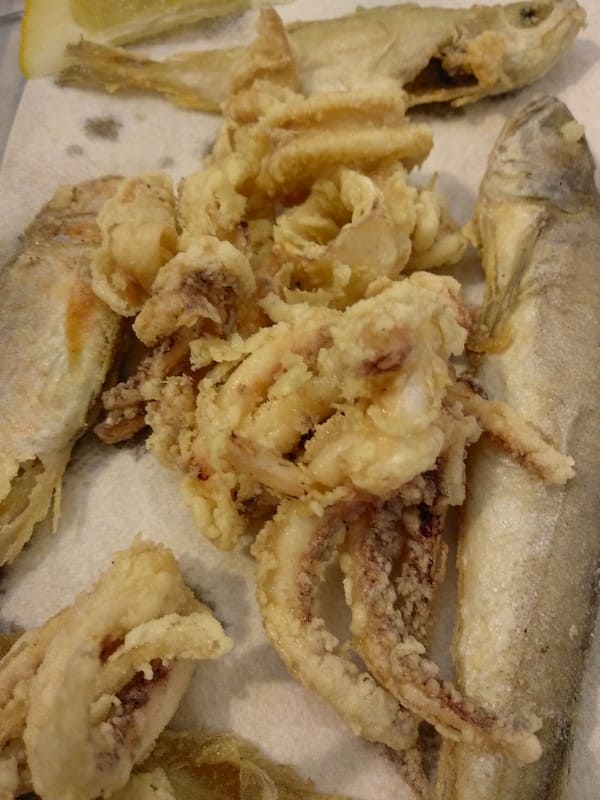
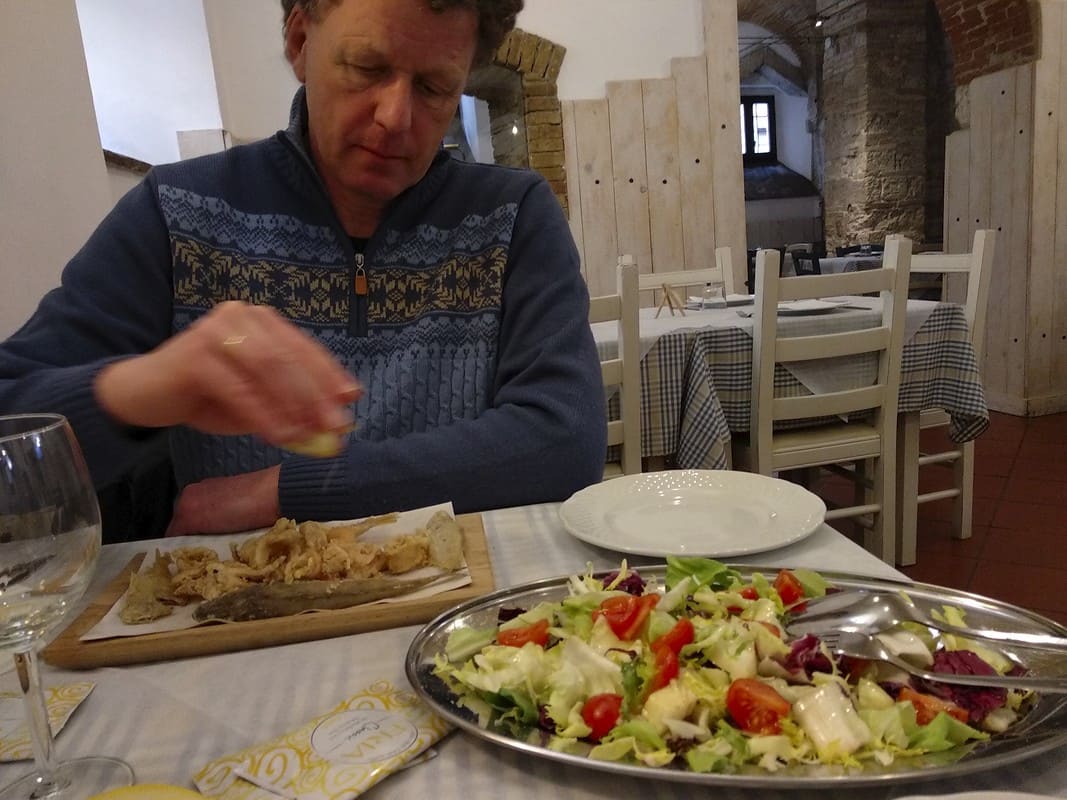
Now we could continue!
2.30 p.m.: Walk to the towers district of Ascoli Piceno.
We returned to Piazza del Popolo via Corso Mazzini and turned onto Viale Trivio. Here we already spotted the first tower. We continued past the Church of San Pietro Martire and the Church of San Vincenzo e San Anastasio.
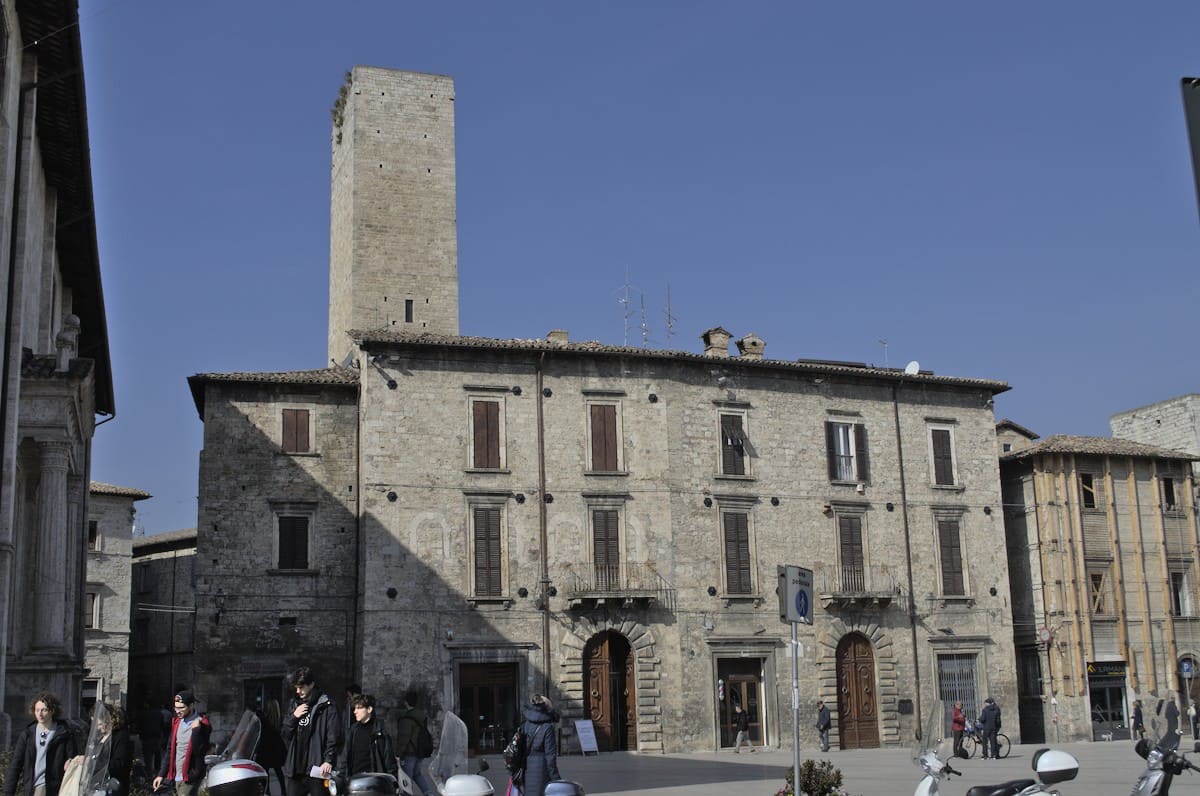
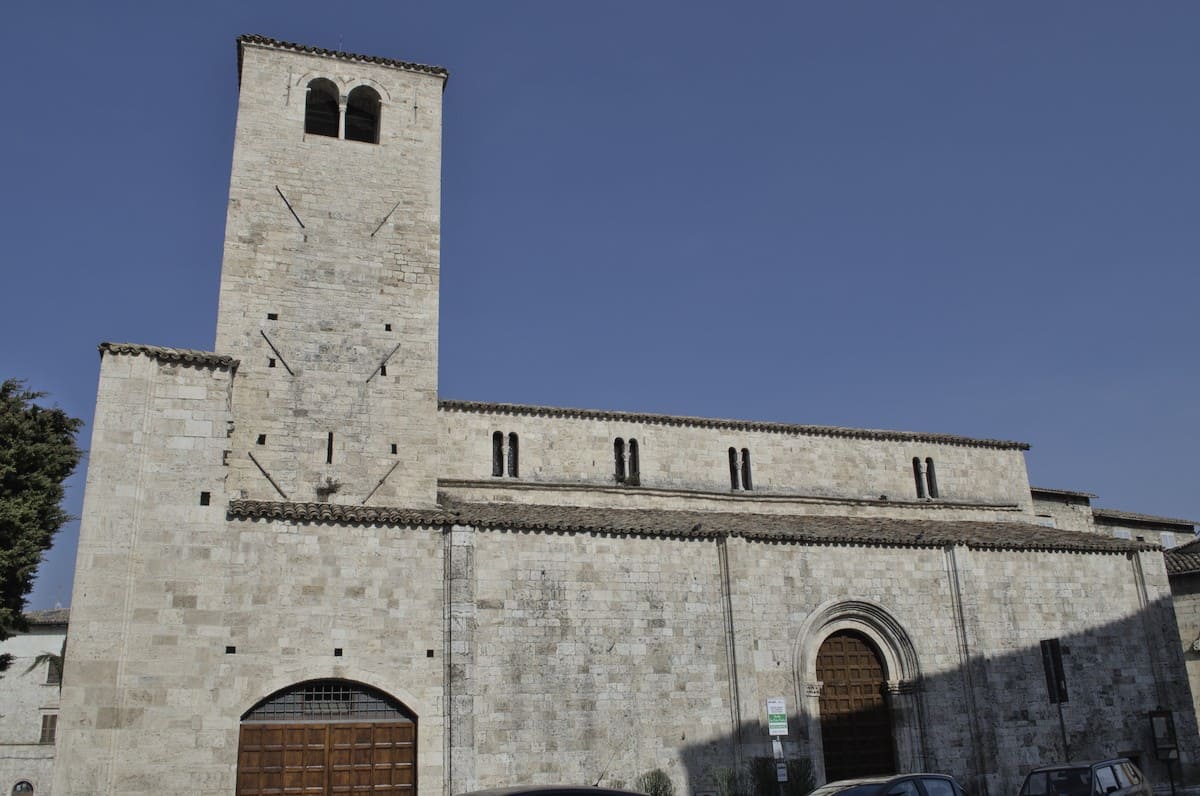
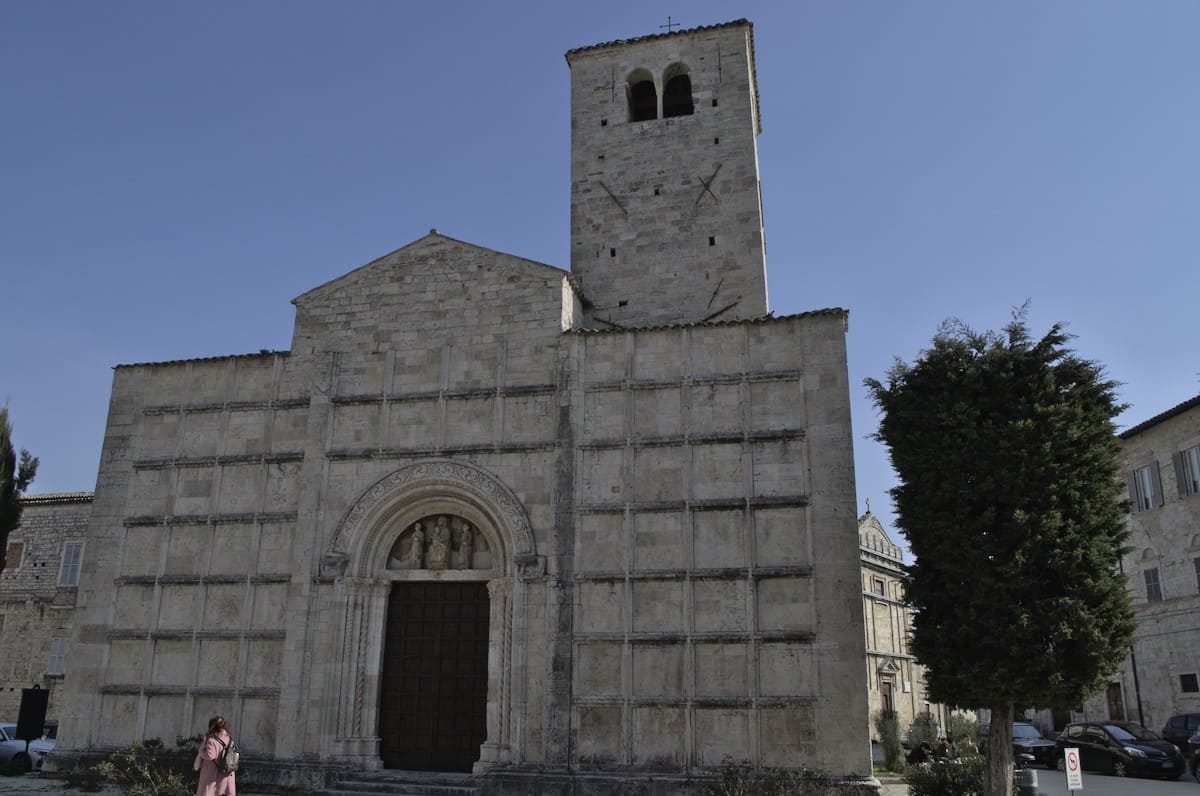
Through the alleys we reached the banks of the Tronto River, which, together with the Castellano River, forms the main artery of the city and was the reason for the first human settlements.
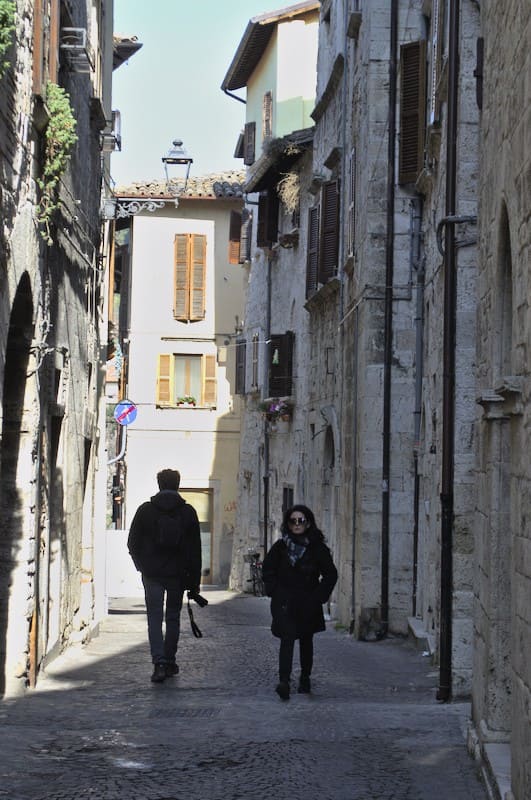
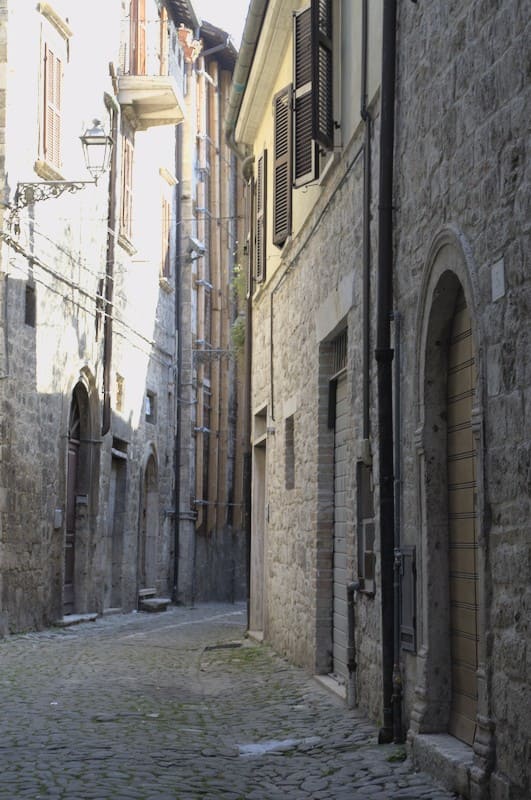
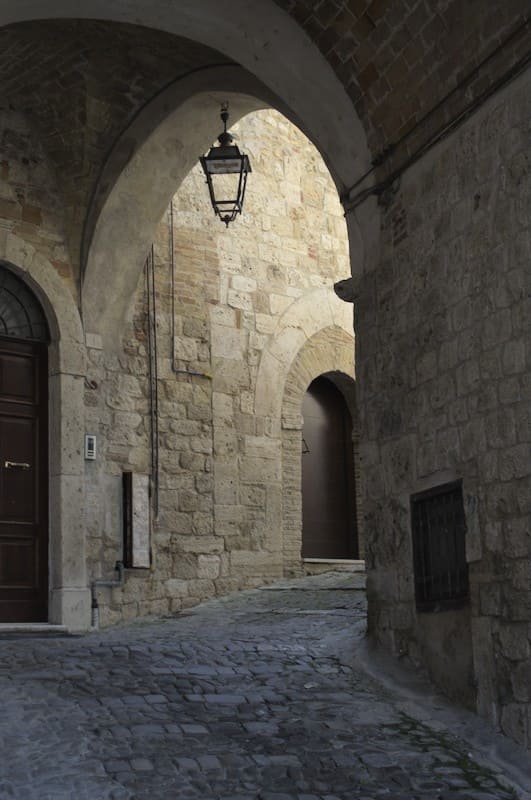
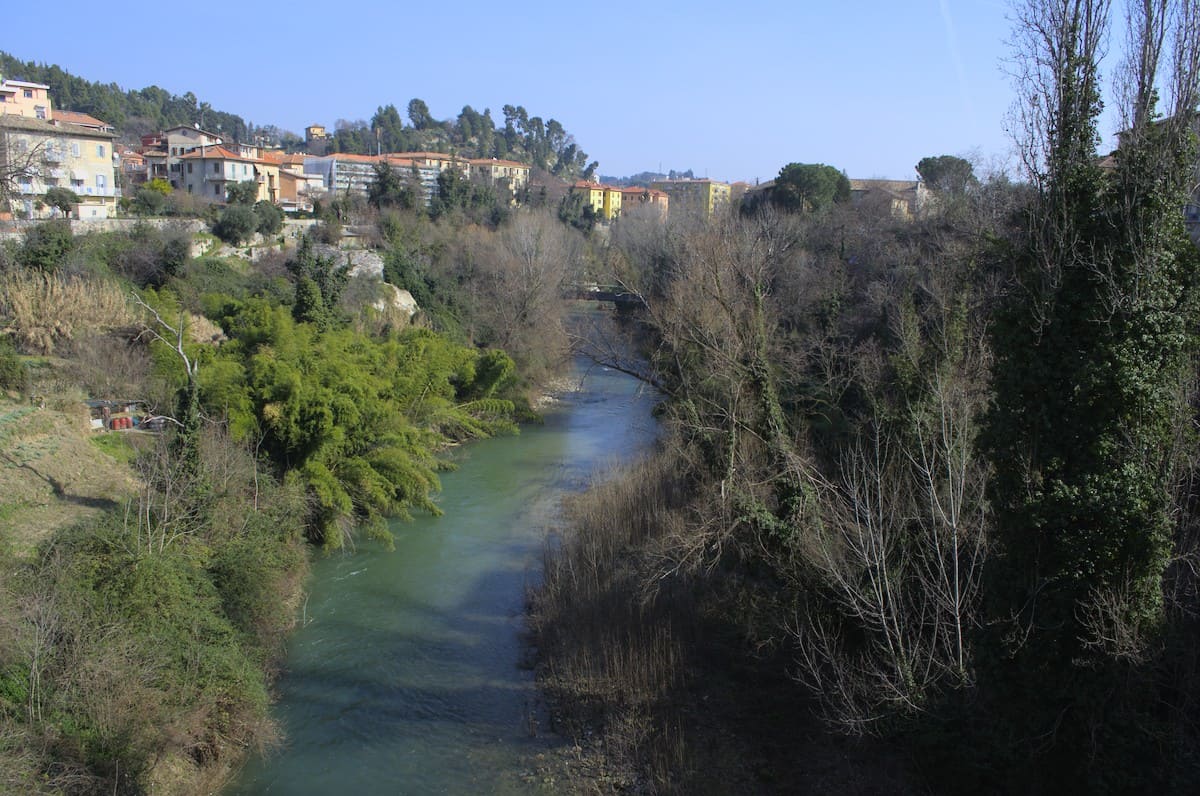
Afterwards we reached the Solestà Gate and crossed the Roman bridge. This is said to have been built in the 1st century AD, but was modified and strengthened in the 1930s. The bridge takes you to the Solestà district.

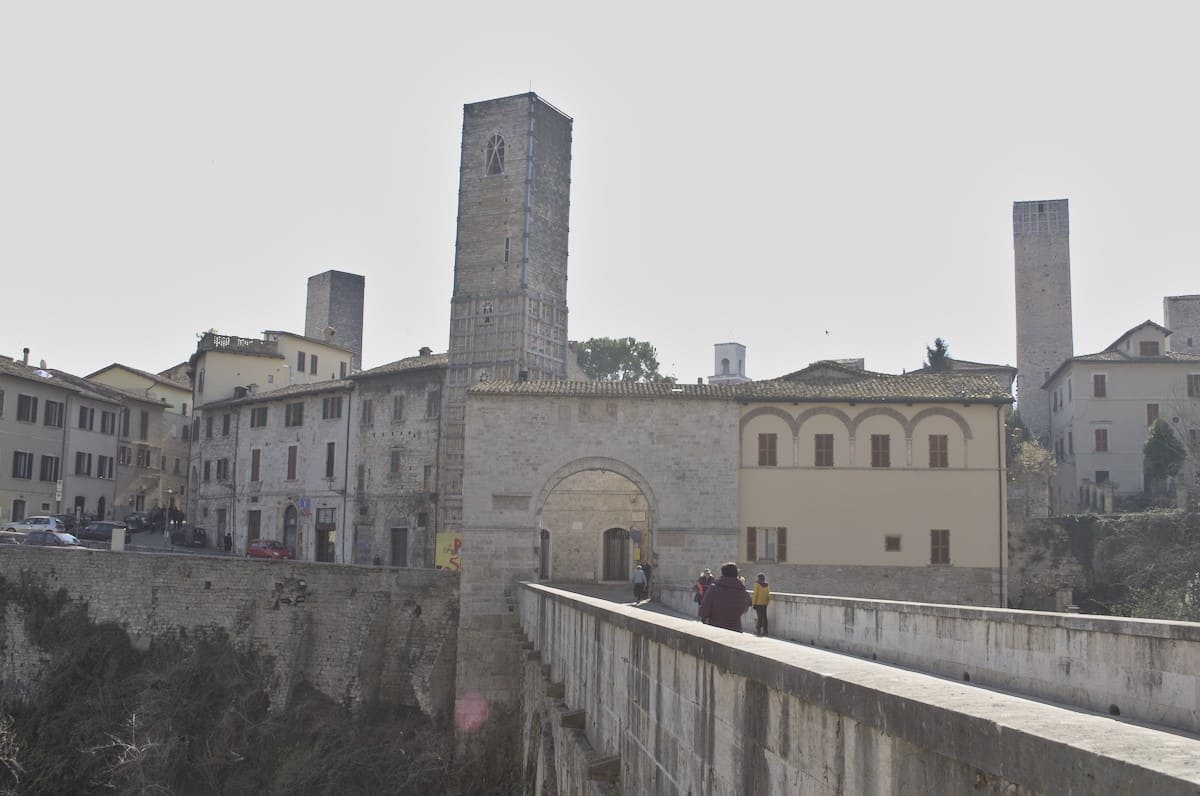
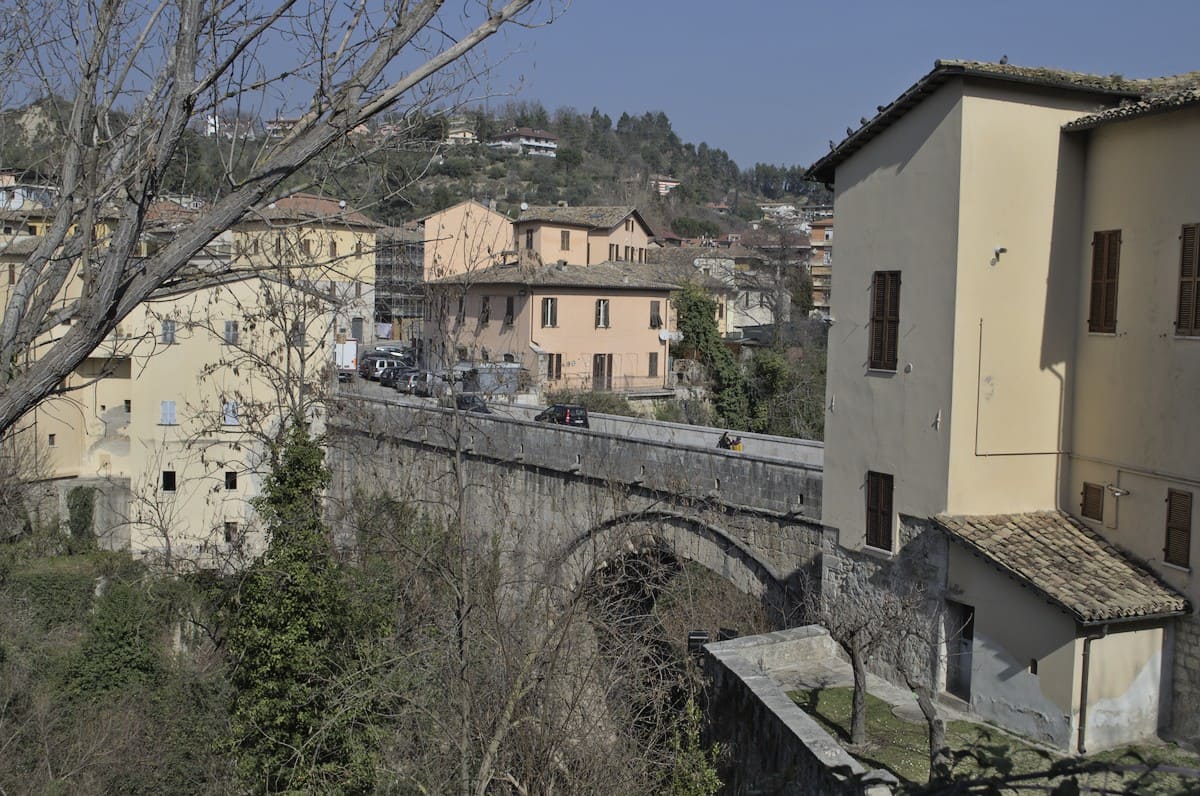
On the opposite side is the Fonte di San Emidio (the fountain of Saint Emidius). Women used to wash clothes here; the washing place or lavatoio is still well preserved.

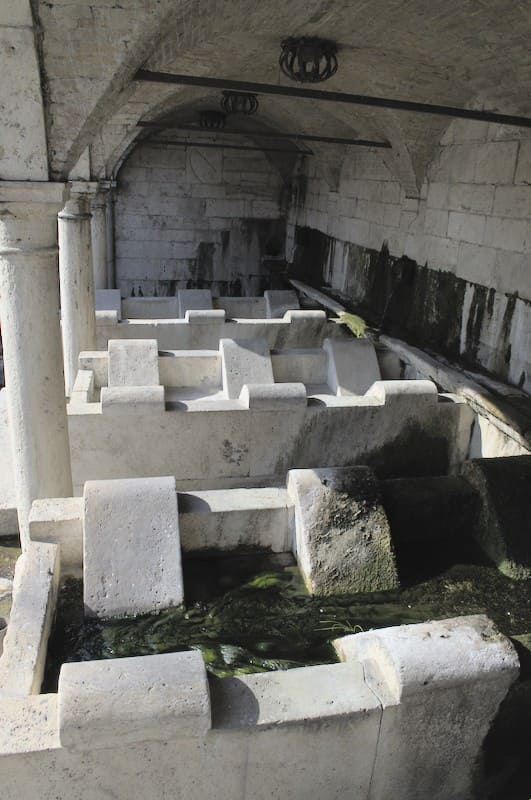
We returned over the bridge and saw some towers along the old city walls and the various alleys before reaching Via dei Torri and rejoining Corso Mazzini.
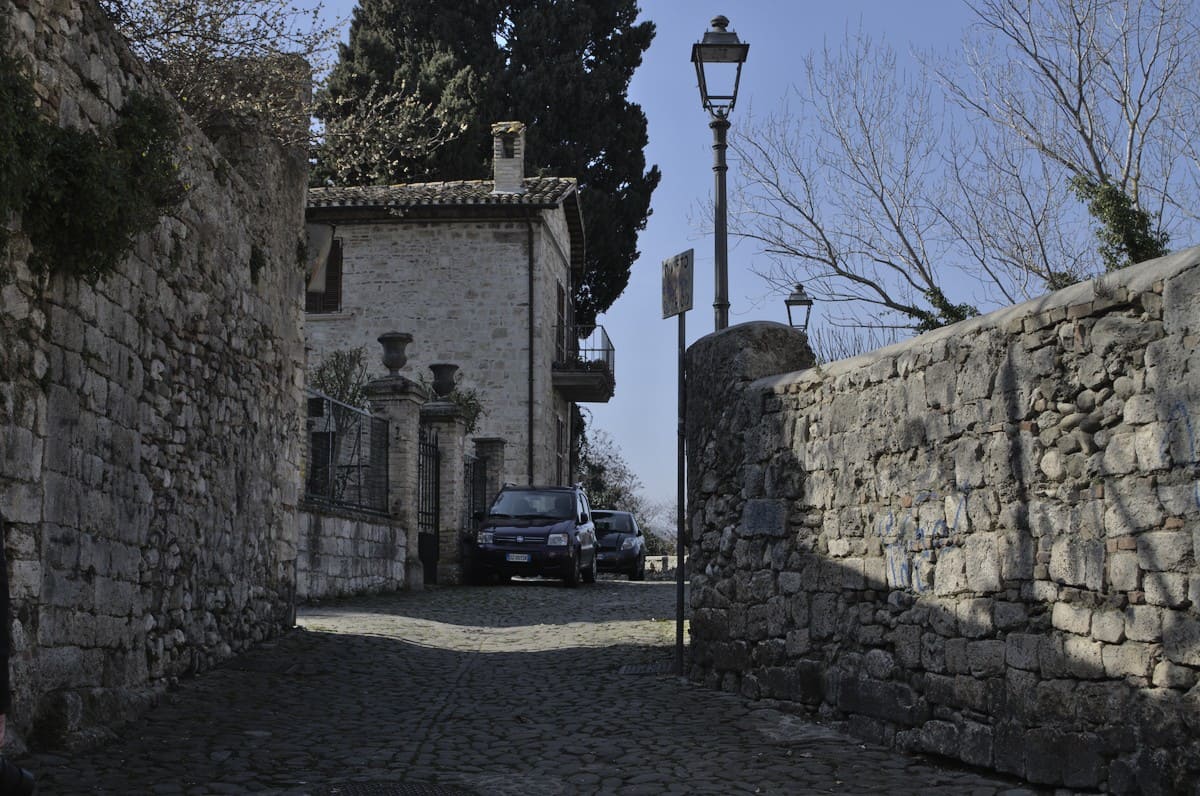
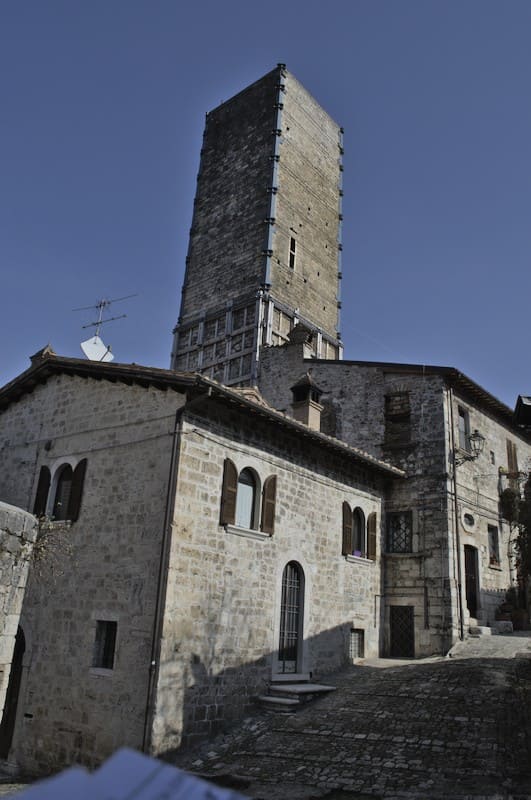

We followed the Corso to the end to visit the Malatesta Fortress on the east side of the city. Also nearby was one of the city’s most photographed landmarks: the Ponte di Cecco. This bridge was the oldest in the city; It was not until the 19th century that their early Roman origins were discovered! It was probably the eastern exit of the Via Salaria. In 1944 it was bombed and repaired.
There are two stories surrounding the name Cecco:
- The 13th century poet Cecco d’Ascoli is said to have built the bridge in one night with the help of the devil.
- or the builder Cecco Aprutino, who restored the bridge in the 14th century.
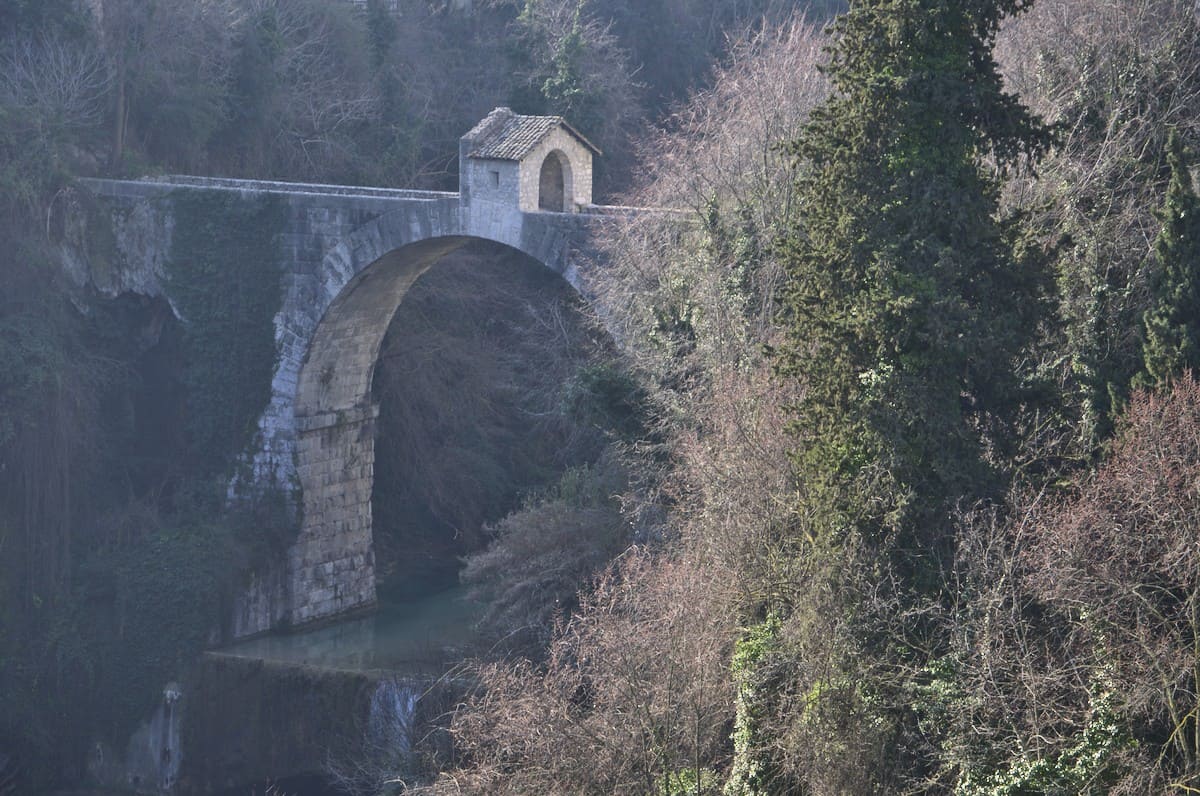
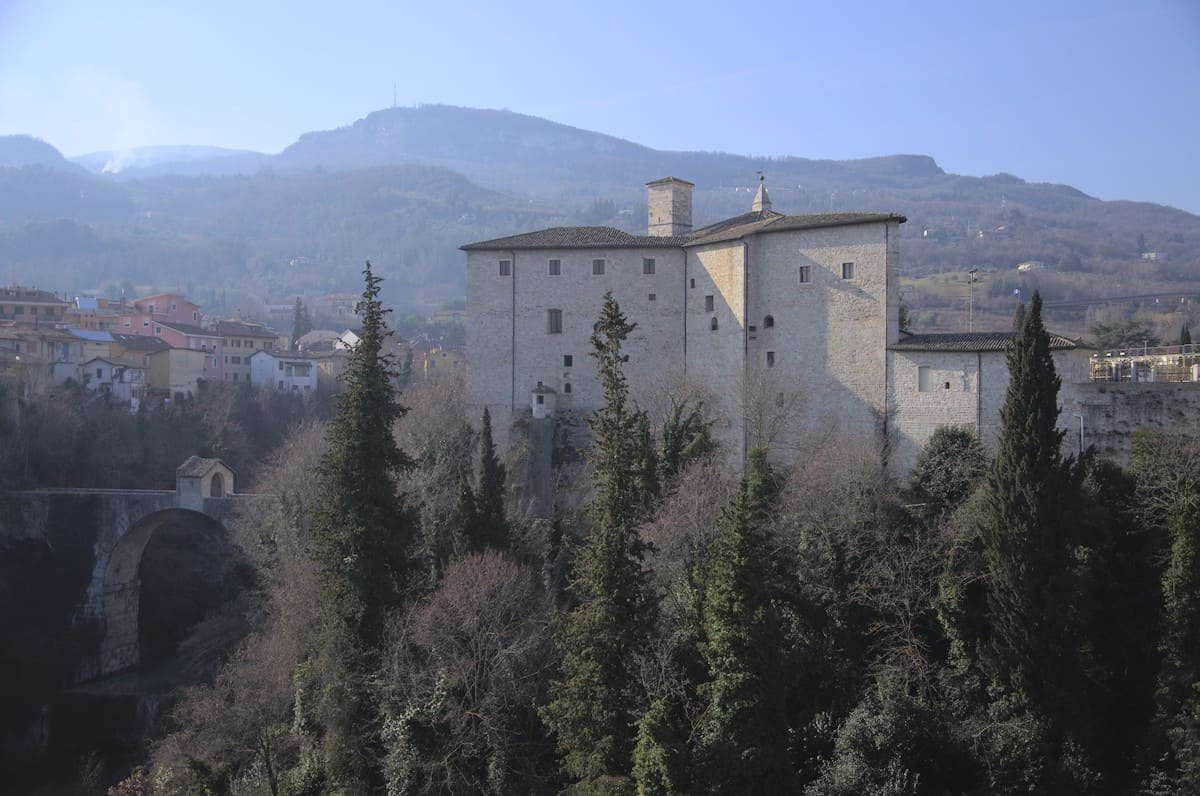
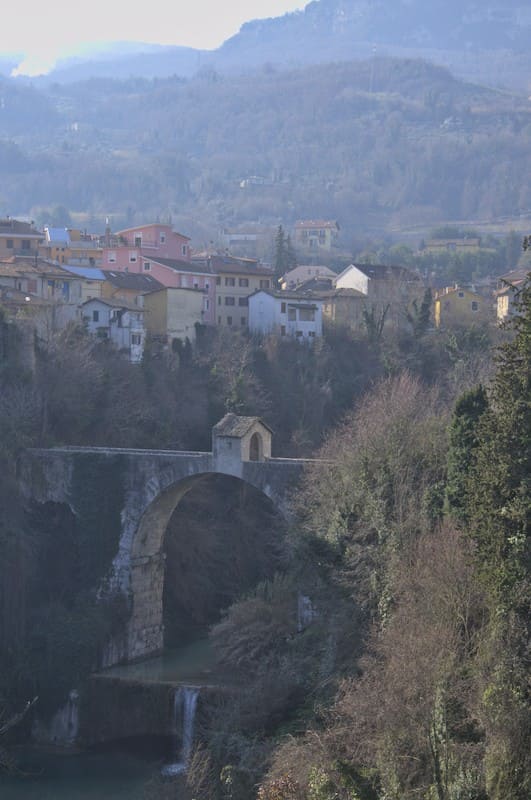
We weren’t able to visit the Malatesta Castle itself. It was built in 1349 by order of the Malatesta family on the site where the Roman baths and later other defensive fortifications were once located. It acquired its current appearance in the 16th century under Pope Paul III. From 2000 it was redesigned as a medieval museum.
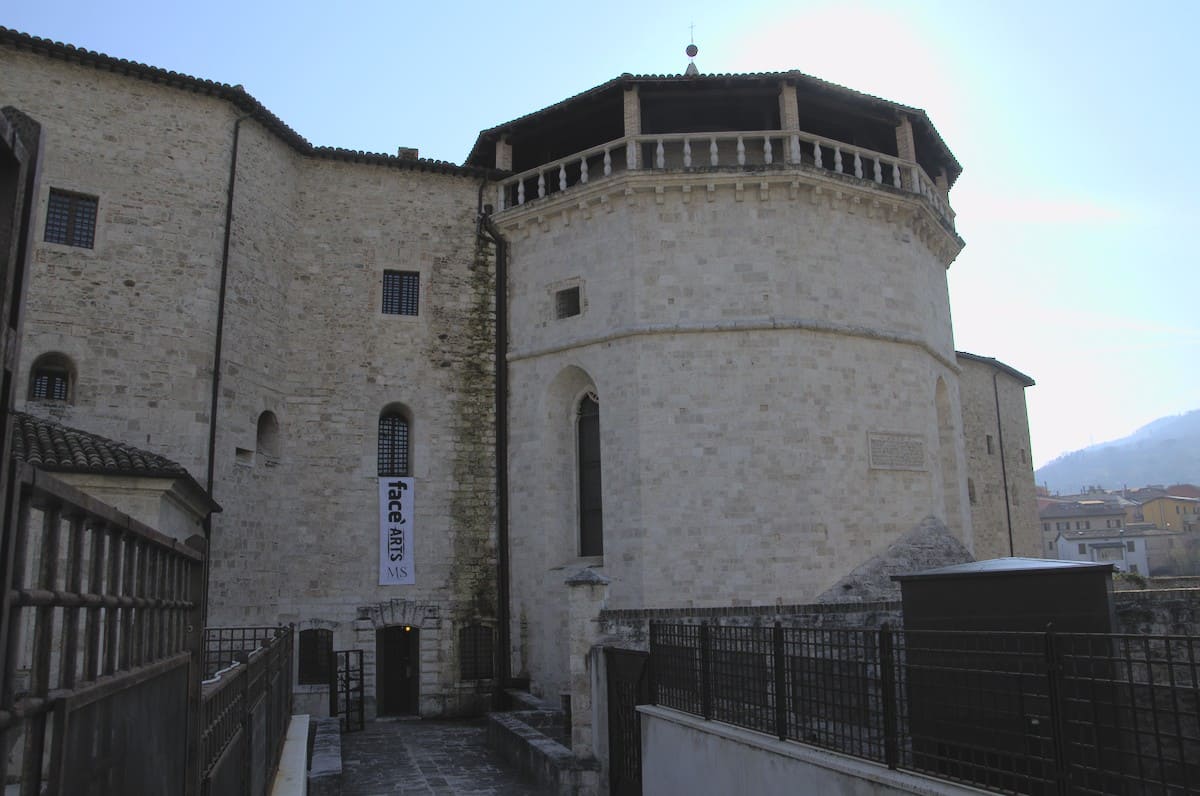
We returned to the city center via the modern bridge with a view of the 1100 meter high Monte Ascensione.
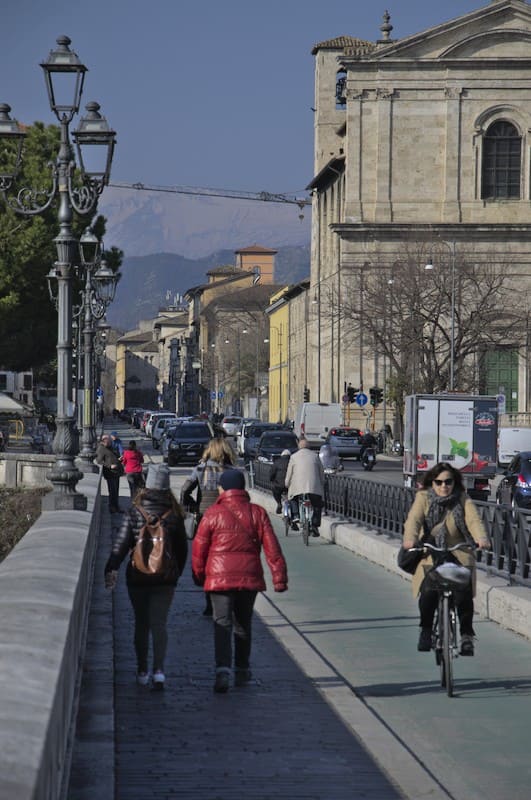
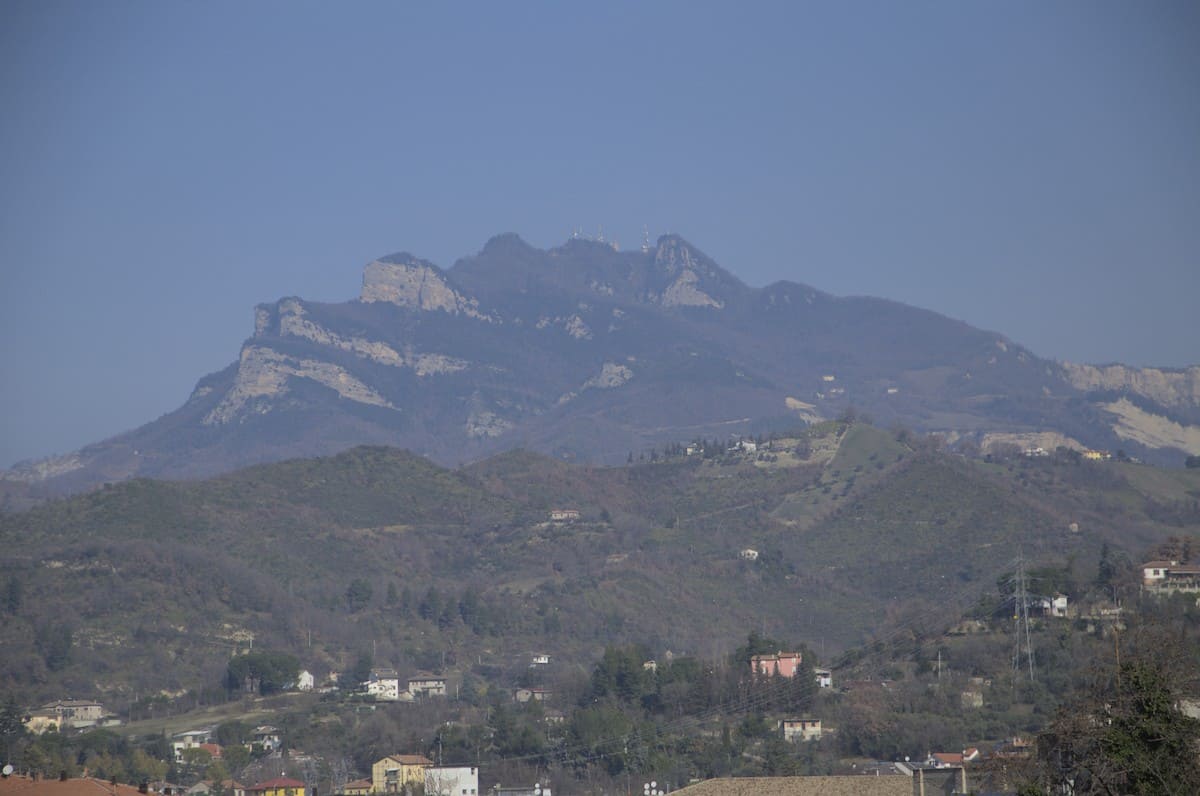
Now we needed some rest and so we took a short break in our B&B, the Stenghe Stracche on Corso Mazzini 65. The B&B was simple but good, and above all quiet yet centrally located.
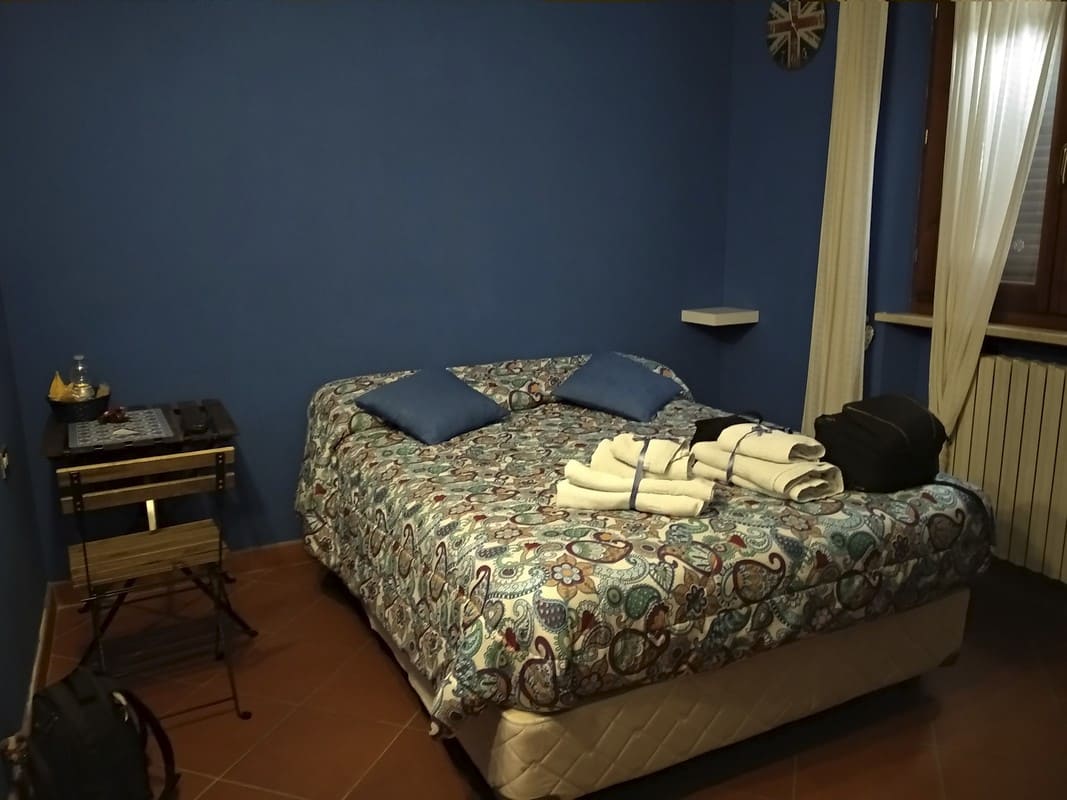
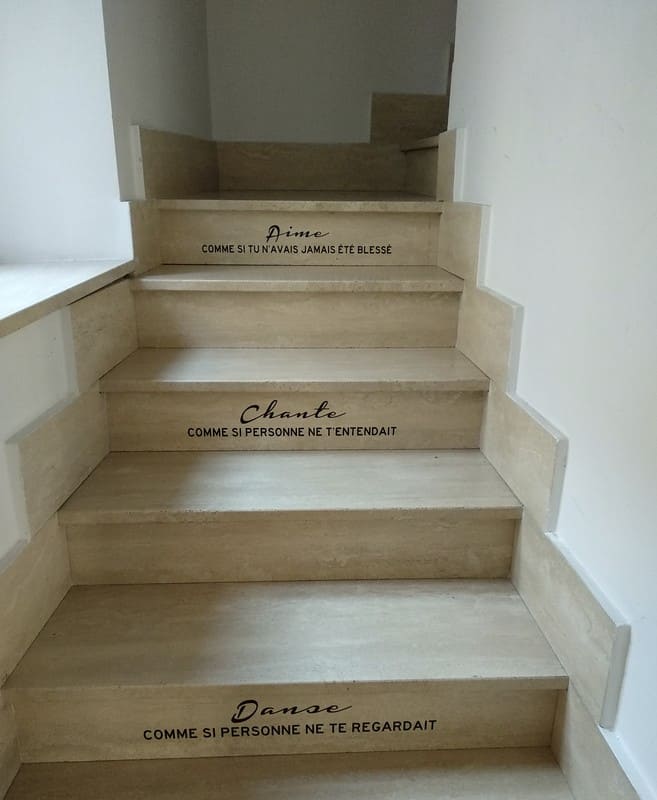
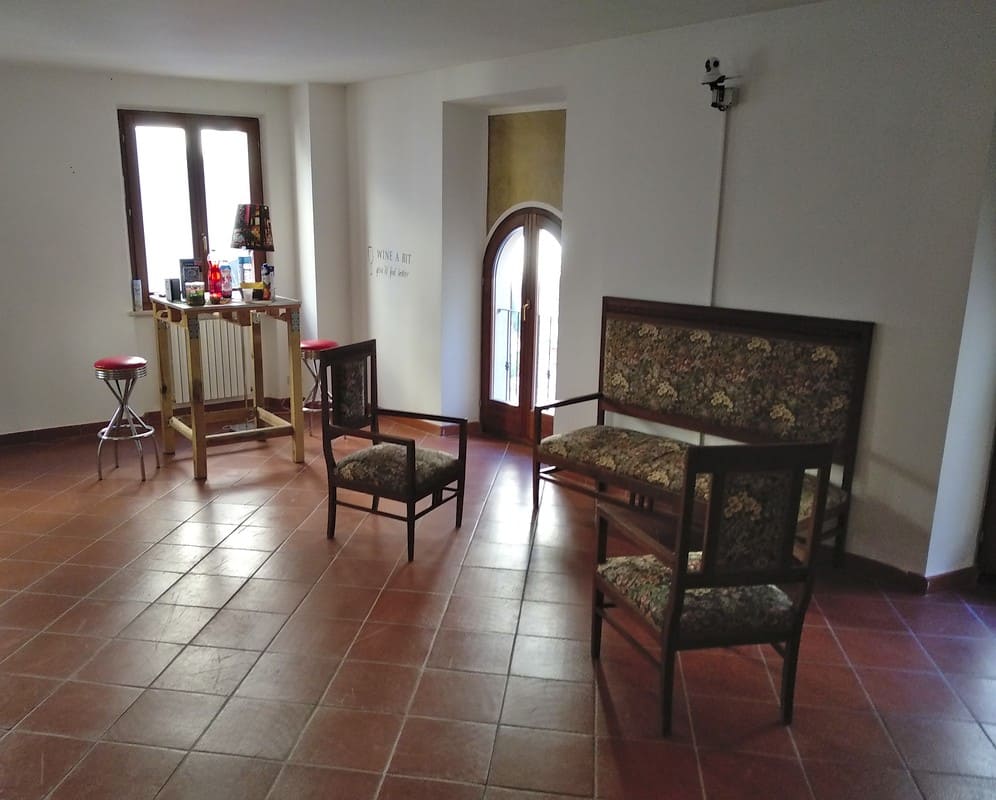
10 pm: Cena / Dinner.
No aperitif today, just dinner! Very close to the B&B was La Nicchia. We of course ordered the infamous Olive Ascolane: fried, stuffed olives. In Ascoli they are definitely still made by hand: you take the large olives of the Ascolana variety and pit them so that there are no holes. Instead of the core, a meat filling with herbs is added and the olive is breaded and deep fried. Bon appetit!
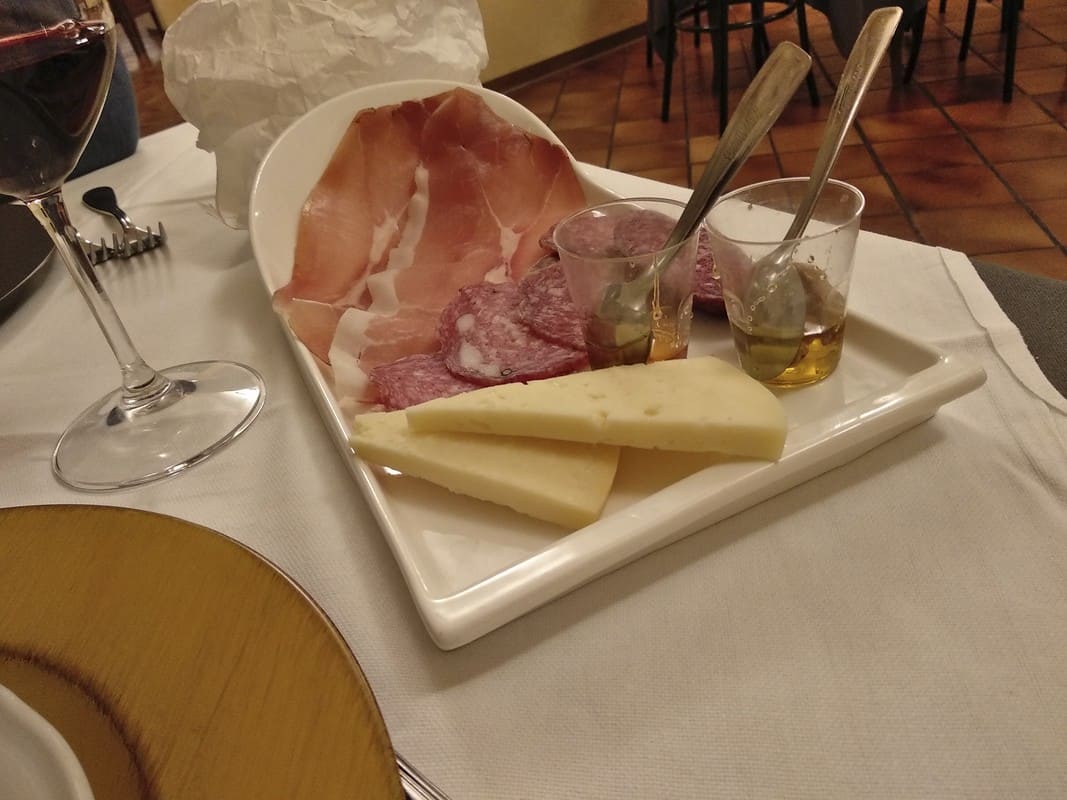
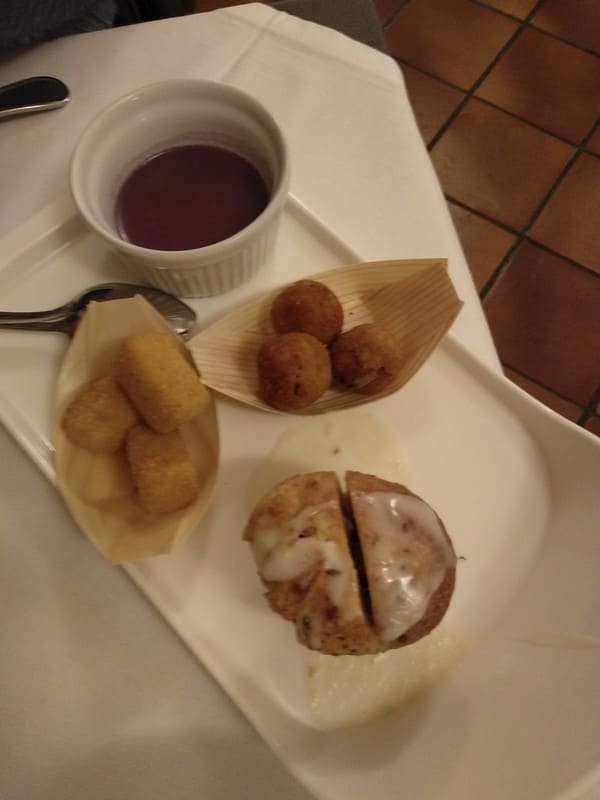
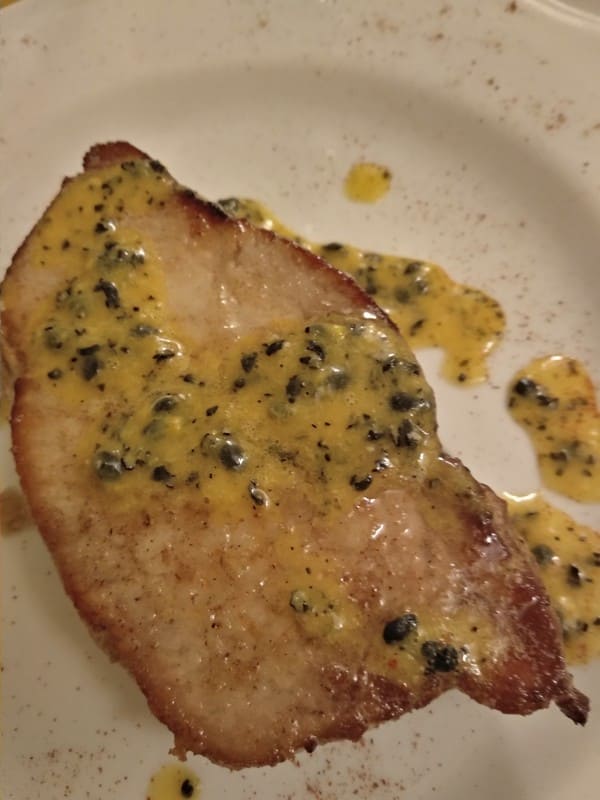
One last look at Ascoli at night and then go to sleep!
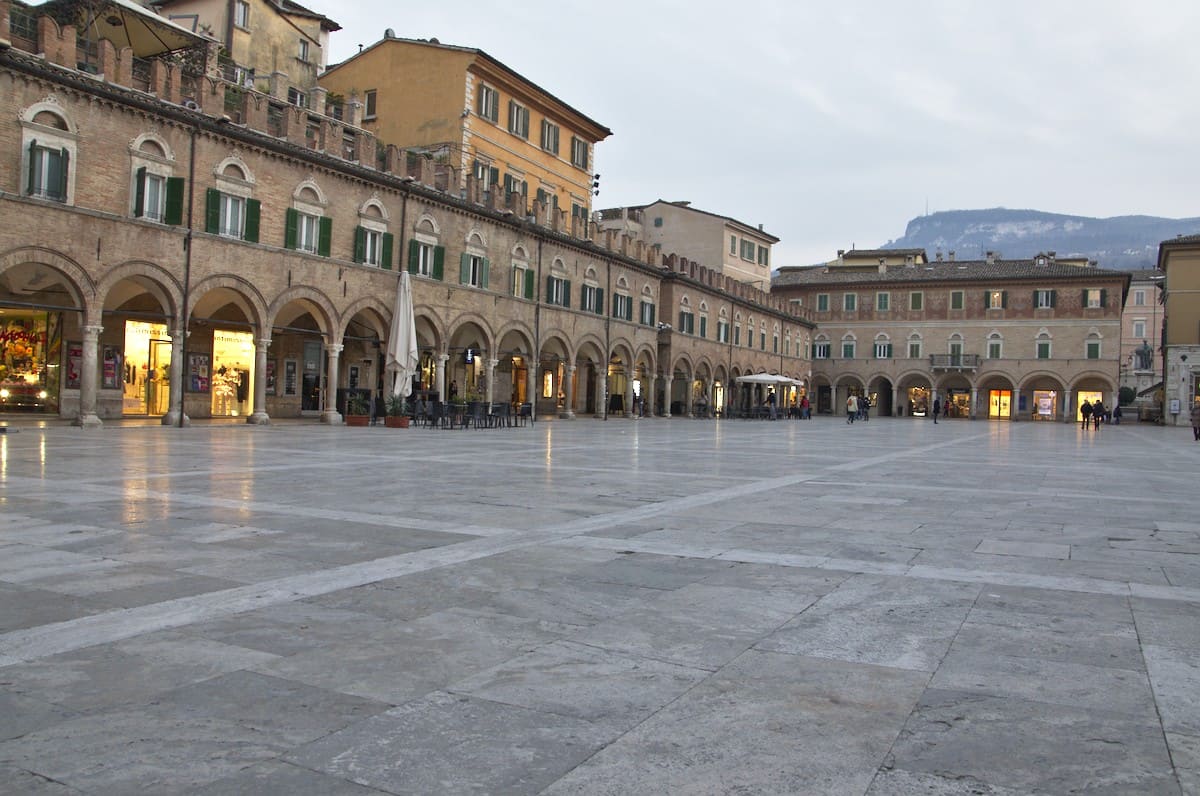
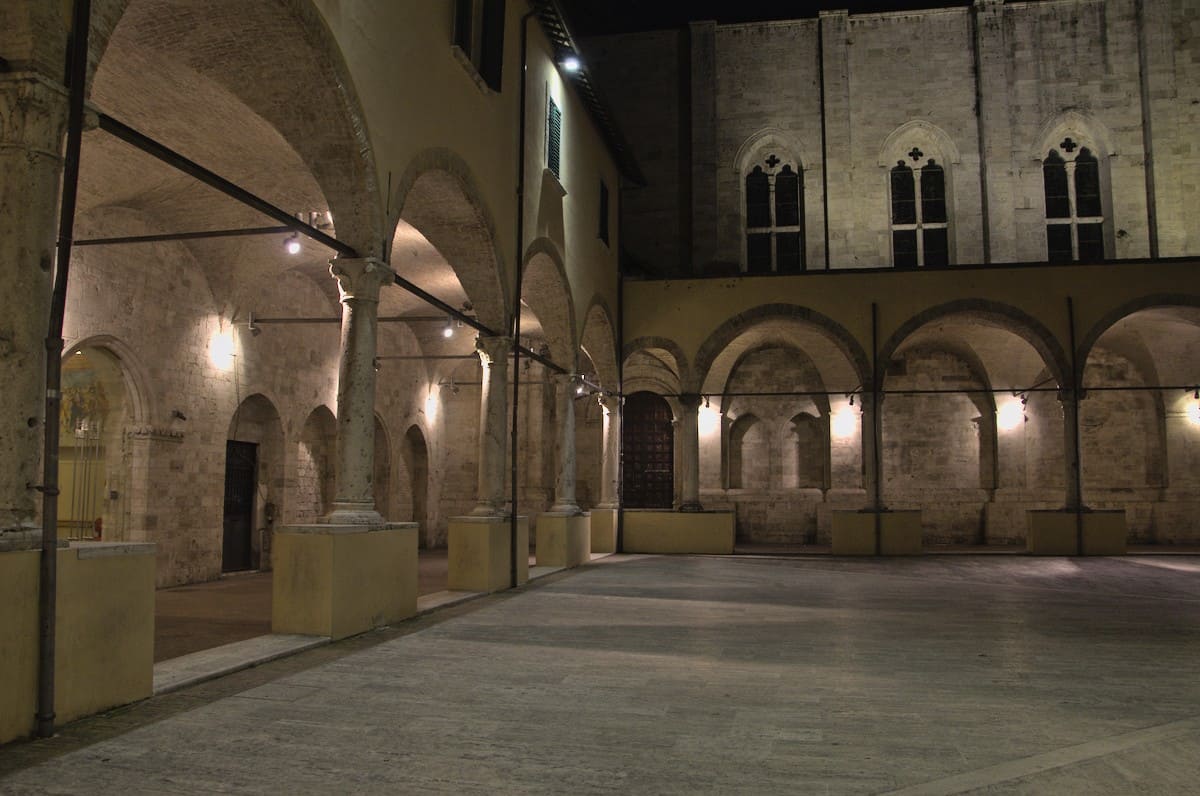
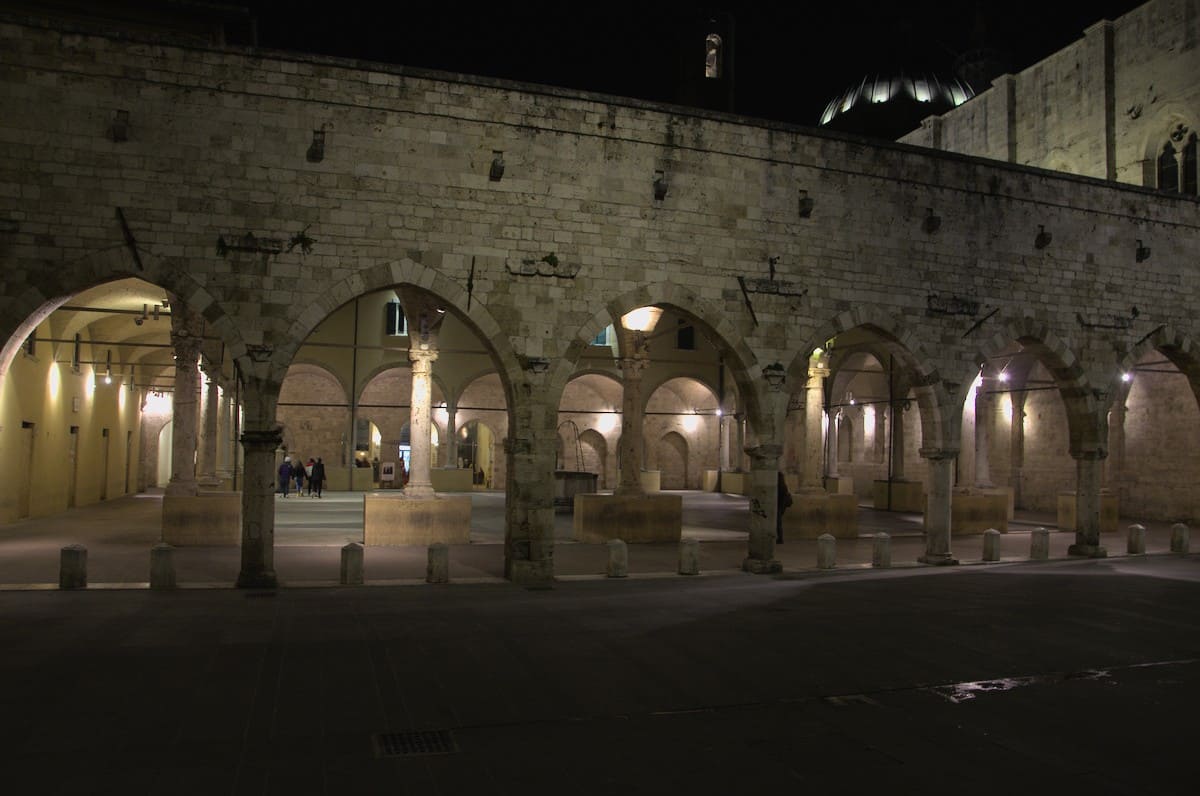
A long article, and yet we only showed a small part of Ascoli Piceno. The city offers so many other attractions such as the Church of San Francesco, the Cave Church of San Emidio, the Papal Paper Mills, the Roman Theater and so on. A nice excuse to come back to write another article!
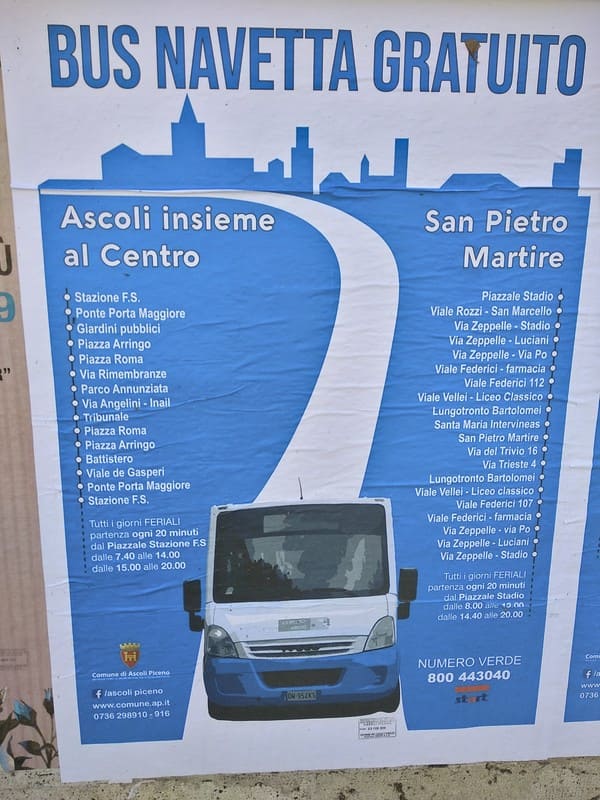
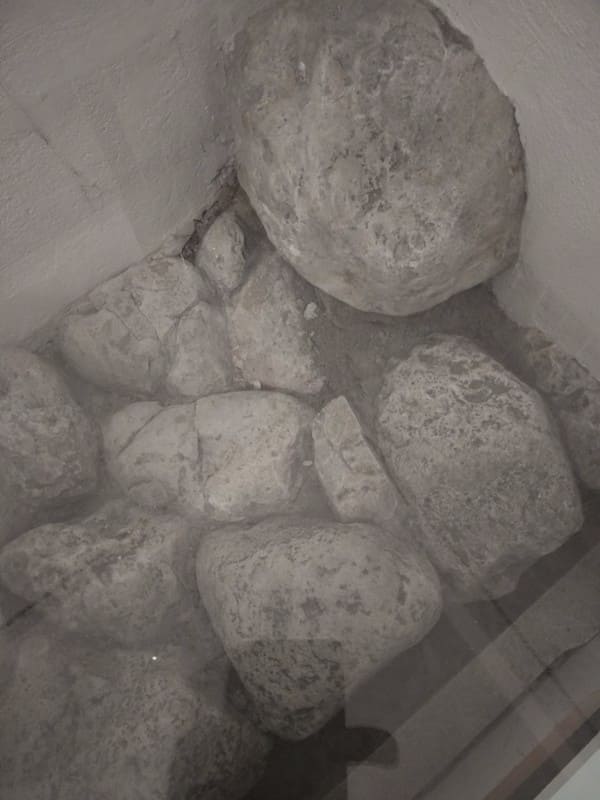
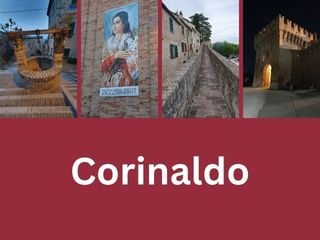

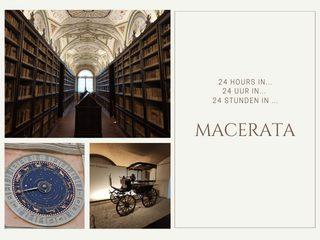
0 Comments